This report serves to describe the mutational landscape and properties of a given individual set, as well as rank genes and genesets according to mutational significance. MutSig v2.0 was used to generate the results found in this report.
-
Working with individual set: GBM-TP
-
Number of patients in set: 291
The input for this pipeline is a set of individuals with the following files associated for each:
-
An annotated .maf file describing the mutations called for the respective individual, and their properties.
-
A .wig file that contains information about the coverage of the sample.
-
MAF used for this analysis:GBM-TP.final_analysis_set.maf
-
Significantly mutated genes (q ≤ 0.1): 85
-
Mutations seen in COSMIC: 495
-
Significantly mutated genes in COSMIC territory: 80
-
Genes with clustered mutations (≤ 3 aa apart): 277
-
Significantly mutated genesets: 119
-
Significantly mutated genesets: (excluding sig. mutated genes):0
-
Read 291 MAFs of type "Broad"
-
Total number of mutations in input MAFs: 21540
-
After removing 126 blacklisted mutations: 21414
-
Number of mutations before filtering: 21414
Table 1. Get Full Table Table representing breakdown of mutations by type.
| type | count |
|---|---|
| Frame_Shift_Del | 547 |
| Frame_Shift_Ins | 209 |
| In_Frame_Del | 209 |
| In_Frame_Ins | 27 |
| Missense_Mutation | 13817 |
| Nonsense_Mutation | 831 |
| Nonstop_Mutation | 11 |
| Silent | 5348 |
| Splice_Site | 355 |
| Translation_Start_Site | 60 |
| Total | 21414 |
Table 2. Get Full Table A breakdown of mutation rates per category discovered for this individual set.
| category | n | N | rate | rate_per_mb | relative_rate | exp_ns_s_ratio |
|---|---|---|---|---|---|---|
| *CpG->T | 5667 | 484801968 | 0.000012 | 12 | 6.3 | 2.1 |
| *Cp(A/C/T)->T | 2473 | 3955187453 | 6.3e-07 | 0.63 | 0.34 | 1.7 |
| A->G | 1716 | 4258795879 | 4e-07 | 0.4 | 0.22 | 2.3 |
| transver | 4020 | 8698785300 | 4.6e-07 | 0.46 | 0.25 | 5 |
| indel+null | 2190 | 8698785300 | 2.5e-07 | 0.25 | 0.14 | NaN |
| double_null | 0 | 8698785300 | 0 | 0 | 0 | NaN |
| Total | 16066 | 8698785300 | 1.8e-06 | 1.8 | 1 | 3.5 |
The x axis represents the samples. The y axis represents the exons, one row per exon, and they are sorted by average coverage across samples. For exons with exactly the same average coverage, they are sorted next by the %GC of the exon. (The secondary sort is especially useful for the zero-coverage exons at the bottom).
Figure 1.
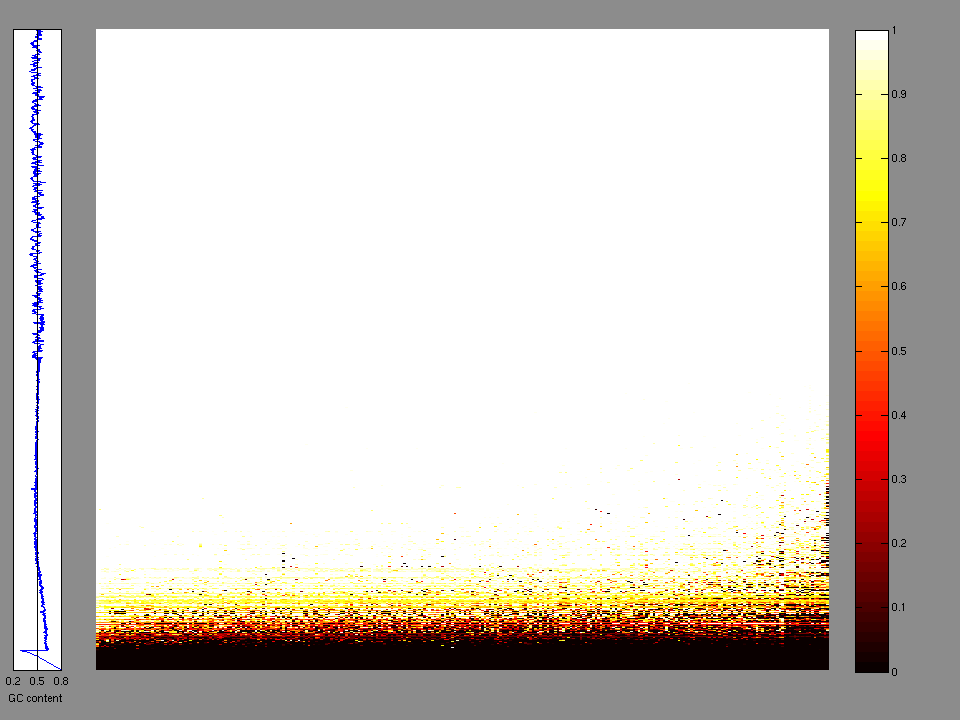
Figure 2. Patients counts and rates file used to generate this plot: GBM-TP.patients.counts_and_rates.txt
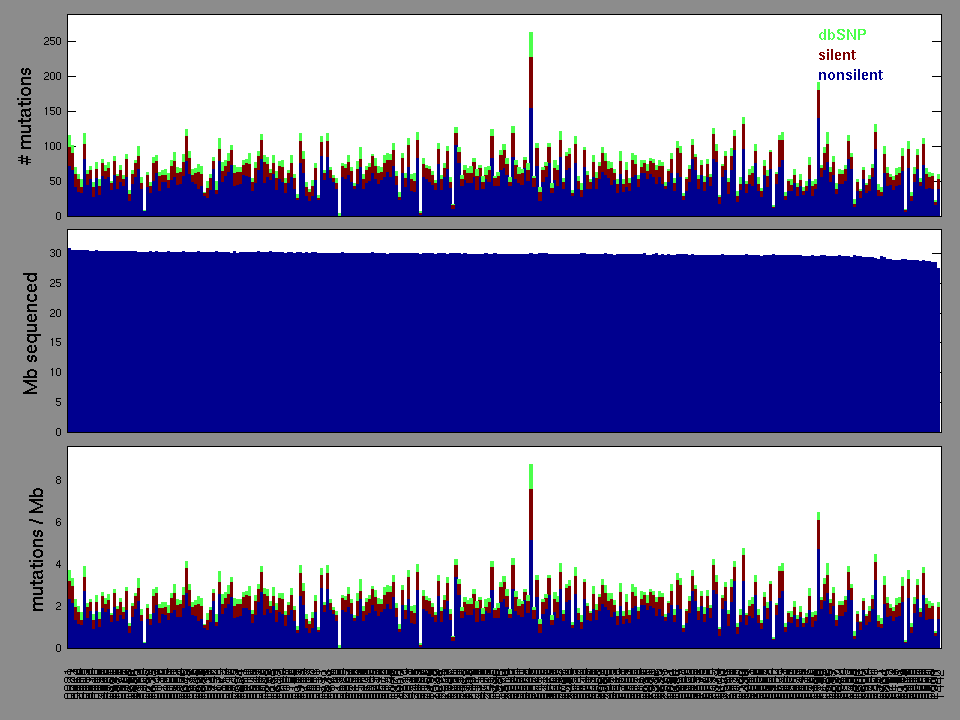
Figure 3. Get High-res Image The matrix in the center of the figure represents individual mutations in patient samples, color-coded by type of mutation, for the significantly mutated genes. The rate of synonymous and non-synonymous mutations is displayed at the top of the matrix. The barplot on the left of the matrix shows the number of mutations in each gene. The percentages represent the fraction of tumors with at least one mutation in the specified gene. The barplot to the right of the matrix displays the q-values for the most significantly mutated genes. The purple boxplots below the matrix (only displayed if required columns are present in the provided MAF) represent the distributions of allelic fractions observed in each sample. The plot at the bottom represents the base substitution distribution of individual samples, using the same categories that were used to calculate significance.

Column Descriptions:
-
N = number of sequenced bases in this gene across the individual set
-
n = number of (nonsilent) mutations in this gene across the individual set
-
npat = number of patients (individuals) with at least one nonsilent mutation
-
nsite = number of unique sites having a non-silent mutation
-
nsil = number of silent mutations in this gene across the individual set
-
n1 = number of nonsilent mutations of type: *CpG->T
-
n2 = number of nonsilent mutations of type: *Cp(A/C/T)->T
-
n3 = number of nonsilent mutations of type: A->G
-
n4 = number of nonsilent mutations of type: transver
-
n5 = number of nonsilent mutations of type: indel+null
-
n6 = number of nonsilent mutations of type: double_null
-
p_classic = p-value for the observed amount of nonsilent mutations being elevated in this gene
-
p_ns_s = p-value for the observed nonsilent/silent ratio being elevated in this gene
-
p_cons = p-value for enrichment of mutations at evolutionarily most-conserved sites in gene
-
p_joint = p-value for clustering + conservation
-
p = p-value (overall)
-
q = q-value, False Discovery Rate (Benjamini-Hochberg procedure)
Table 3. Get Full Table A Ranked List of Significantly Mutated Genes. Number of significant genes found: 85. Number of genes displayed: 35. Click on a gene name to display its stick figure depicting the distribution of mutations and mutation types across the chosen gene (this feature may not be available for all significant genes).
| rank | gene | description | N | n | npat | nsite | nsil | n1 | n2 | n3 | n4 | n5 | n6 | p_classic | p_ns_s | p_cons | p_joint | p | q |
|---|---|---|---|---|---|---|---|---|---|---|---|---|---|---|---|---|---|---|---|
| 1 | PIK3R1 | phosphoinositide-3-kinase, regulatory subunit 1 (alpha) | 687164 | 34 | 33 | 28 | 0 | 0 | 3 | 4 | 7 | 20 | 0 | 7.55e-15 | 0.0059 | 0.28 | 4.8e-06 | 0.000 | 0.000 |
| 2 | TP53 | tumor protein p53 | 368172 | 100 | 83 | 61 | 1 | 31 | 15 | 11 | 24 | 19 | 0 | <1.00e-15 | 1.3e-11 | 0 | 0 | <1.00e-15 | <3.63e-12 |
| 3 | EGFR | epidermal growth factor receptor (erythroblastic leukemia viral (v-erb-b) oncogene homolog, avian) | 1163406 | 95 | 77 | 45 | 7 | 10 | 45 | 2 | 33 | 5 | 0 | 1.33e-15 | 4.2e-09 | 0 | 0 | <1.00e-15 | <3.63e-12 |
| 4 | IDH1 | isocitrate dehydrogenase 1 (NADP+), soluble | 371447 | 15 | 15 | 2 | 0 | 13 | 0 | 0 | 2 | 0 | 0 | 3.55e-15 | 0.0065 | 0.84 | 0 | <1.00e-15 | <3.63e-12 |
| 5 | BRAF | v-raf murine sarcoma viral oncogene homolog B1 | 648921 | 6 | 6 | 2 | 1 | 0 | 1 | 0 | 5 | 0 | 0 | 0.000350 | 0.62 | 0.085 | 0 | <1.00e-15 | <3.63e-12 |
| 6 | PTEN | phosphatase and tensin homolog (mutated in multiple advanced cancers 1) | 347800 | 93 | 90 | 75 | 0 | 5 | 21 | 10 | 14 | 43 | 0 | <1.00e-15 | 1.1e-09 | 0.6 | 0.03 | <1.22e-15 | <3.69e-12 |
| 7 | PIK3CA | phosphoinositide-3-kinase, catalytic, alpha polypeptide | 950995 | 35 | 32 | 28 | 0 | 5 | 9 | 8 | 6 | 7 | 0 | 1.44e-15 | 0.00015 | 0.23 | 0.027 | 1.55e-15 | 4.03e-12 |
| 8 | RB1 | retinoblastoma 1 (including osteosarcoma) | 773460 | 24 | 24 | 22 | 1 | 0 | 0 | 0 | 1 | 23 | 0 | 3.22e-15 | 0.097 | 0.062 | 0.065 | 7.77e-15 | 1.76e-11 |
| 9 | NF1 | neurofibromin 1 (neurofibromatosis, von Recklinghausen disease, Watson disease) | 2527351 | 34 | 32 | 33 | 1 | 0 | 2 | 2 | 2 | 28 | 0 | 6.55e-15 | 0.0041 | 0.95 | 0.5 | 1.13e-13 | 2.28e-10 |
| 10 | SPTA1 | spectrin, alpha, erythrocytic 1 (elliptocytosis 2) | 2171581 | 29 | 27 | 27 | 1 | 11 | 4 | 1 | 9 | 4 | 0 | 7.11e-15 | 0.01 | 0.5 | 0.72 | 1.74e-13 | 3.15e-10 |
| 11 | KRTAP4-11 | keratin associated protein 4-11 | 152984 | 9 | 9 | 5 | 0 | 1 | 4 | 0 | 4 | 0 | 0 | 8.03e-12 | 0.049 | 1 | 0.24 | 5.33e-11 | 8.79e-08 |
| 12 | GABRA6 | gamma-aminobutyric acid (GABA) A receptor, alpha 6 | 406622 | 11 | 11 | 10 | 1 | 4 | 2 | 1 | 4 | 0 | 0 | 3.47e-11 | 0.11 | 0.38 | 0.76 | 6.65e-10 | 1.01e-06 |
| 13 | KEL | Kell blood group, metallo-endopeptidase | 657936 | 15 | 15 | 12 | 2 | 8 | 0 | 1 | 3 | 3 | 0 | 2.89e-10 | 0.19 | 0.93 | 0.68 | 4.59e-09 | 6.40e-06 |
| 14 | RPL5 | ribosomal protein L5 | 269214 | 8 | 8 | 8 | 0 | 0 | 1 | 1 | 0 | 6 | 0 | 1.15e-09 | 0.28 | 0.24 | 0.43 | 1.12e-08 | 1.44e-05 |
| 15 | PRB2 | proline-rich protein BstNI subfamily 2 | 367479 | 6 | 6 | 2 | 0 | 0 | 0 | 0 | 0 | 6 | 0 | 1.31e-06 | 1 | 0.63 | 0.0019 | 5.08e-08 | 5.76e-05 |
| 16 | CDH18 | cadherin 18, type 2 | 702163 | 11 | 11 | 10 | 0 | 3 | 3 | 0 | 4 | 1 | 0 | 1.74e-08 | 0.048 | 0.76 | 0.14 | 5.08e-08 | 5.76e-05 |
| 17 | SEMA3C | sema domain, immunoglobulin domain (Ig), short basic domain, secreted, (semaphorin) 3C | 673506 | 11 | 11 | 11 | 1 | 3 | 0 | 2 | 5 | 1 | 0 | 1.14e-08 | 0.22 | 0.57 | 0.65 | 1.46e-07 | 0.000156 |
| 18 | TPTE2 | transmembrane phosphoinositide 3-phosphatase and tensin homolog 2 | 477884 | 8 | 8 | 6 | 0 | 2 | 1 | 0 | 2 | 3 | 0 | 4.12e-07 | 0.1 | 0.031 | 0.02 | 1.64e-07 | 0.000165 |
| 19 | ZNF844 | zinc finger protein 844 | 448463 | 6 | 6 | 3 | 1 | 0 | 0 | 2 | 4 | 0 | 0 | 4.38e-05 | 0.5 | 1 | 0.00037 | 3.10e-07 | 0.000296 |
| 20 | OR8K3 | olfactory receptor, family 8, subfamily K, member 3 | 273211 | 7 | 7 | 7 | 1 | 2 | 2 | 0 | 2 | 1 | 0 | 2.97e-08 | 0.32 | 0.95 | 0.7 | 3.91e-07 | 0.000355 |
| 21 | OR5AR1 | olfactory receptor, family 5, subfamily AR, member 1 | 271597 | 7 | 7 | 7 | 0 | 3 | 0 | 2 | 2 | 0 | 0 | 1.03e-07 | 0.18 | 0.098 | 0.24 | 4.51e-07 | 0.000389 |
| 22 | STAG2 | stromal antigen 2 | 1141918 | 12 | 12 | 12 | 0 | 0 | 0 | 0 | 2 | 10 | 0 | 6.41e-08 | 0.19 | 0.63 | 0.57 | 6.58e-07 | 0.000542 |
| 23 | SEMG1 | semenogelin I | 406527 | 8 | 8 | 7 | 0 | 5 | 0 | 2 | 0 | 1 | 0 | 9.15e-08 | 0.11 | 0.52 | 0.5 | 8.22e-07 | 0.000648 |
| 24 | CDC27 | cell division cycle 27 homolog (S. cerevisiae) | 736005 | 7 | 6 | 3 | 0 | 0 | 0 | 1 | 0 | 6 | 0 | 0.000241 | 0.61 | 0.042 | 0.00023 | 9.95e-07 | 0.000751 |
| 25 | PDGFRA | platelet-derived growth factor receptor, alpha polypeptide | 977162 | 13 | 11 | 12 | 1 | 0 | 5 | 2 | 4 | 2 | 0 | 7.69e-07 | 0.096 | 0.29 | 0.17 | 2.19e-06 | 0.00159 |
| 26 | IFNA10 | interferon, alpha 10 | 163489 | 4 | 2 | 2 | 1 | 0 | 2 | 2 | 0 | 0 | 0 | 0.00516 | 0.46 | 0.68 | 0.000043 | 3.65e-06 | 0.00255 |
| 27 | SULT1B1 | sulfotransferase family, cytosolic, 1B, member 1 | 265051 | 7 | 6 | 7 | 1 | 0 | 2 | 1 | 3 | 1 | 0 | 1.19e-06 | 0.36 | 0.89 | 0.26 | 4.98e-06 | 0.00334 |
| 28 | ADAM29 | ADAM metallopeptidase domain 29 | 717863 | 9 | 9 | 8 | 1 | 6 | 0 | 0 | 2 | 1 | 0 | 5.12e-07 | 0.34 | 0.64 | 0.65 | 5.28e-06 | 0.00342 |
| 29 | HEATR7B2 | HEAT repeat family member 7B2 | 1295264 | 12 | 12 | 12 | 2 | 3 | 1 | 0 | 6 | 2 | 0 | 2.35e-05 | 0.31 | 0.69 | 0.018 | 6.59e-06 | 0.00412 |
| 30 | COL1A2 | collagen, type I, alpha 2 | 1195564 | 12 | 12 | 12 | 1 | 3 | 3 | 0 | 6 | 0 | 0 | 1.81e-06 | 0.16 | 0.21 | 0.29 | 8.14e-06 | 0.00492 |
| 31 | ABCC9 | ATP-binding cassette, sub-family C (CFTR/MRP), member 9 | 1435985 | 14 | 11 | 14 | 1 | 4 | 0 | 3 | 5 | 2 | 0 | 9.65e-06 | 0.1 | 0.42 | 0.062 | 9.18e-06 | 0.00537 |
| 32 | NLRP5 | NLR family, pyrin domain containing 5 | 989666 | 12 | 12 | 11 | 2 | 9 | 0 | 1 | 2 | 0 | 0 | 4.51e-06 | 0.11 | 0.064 | 0.19 | 1.27e-05 | 0.00722 |
| 33 | LZTR1 | leucine-zipper-like transcription regulator 1 | 666005 | 10 | 10 | 10 | 0 | 4 | 0 | 1 | 4 | 1 | 0 | 4.87e-06 | 0.08 | 0.21 | 0.26 | 1.81e-05 | 0.00993 |
| 34 | CALCR | calcitonin receptor | 436734 | 8 | 8 | 8 | 0 | 6 | 1 | 1 | 0 | 0 | 0 | 1.28e-06 | 0.051 | 0.82 | 1 | 1.86e-05 | 0.00993 |
| 35 | QKI | quaking homolog, KH domain RNA binding (mouse) | 337207 | 5 | 5 | 5 | 0 | 0 | 0 | 0 | 2 | 3 | 0 | 4.06e-05 | 0.69 | 0.0058 | 0.034 | 2.02e-05 | 0.0104 |
Figure S1. This figure depicts the distribution of mutations and mutation types across the PIK3R1 significant gene.
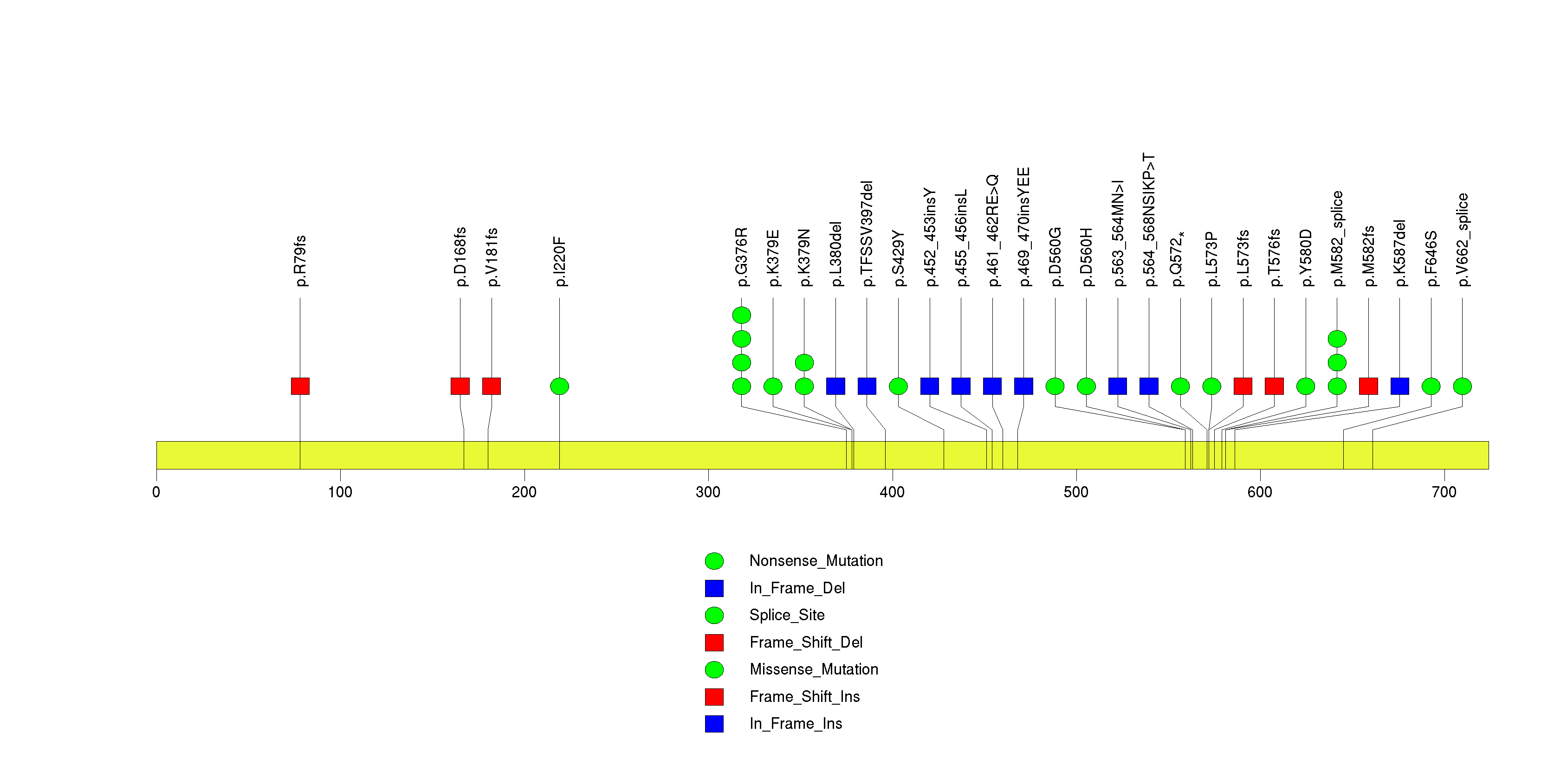
Figure S2. This figure depicts the distribution of mutations and mutation types across the TP53 significant gene.

Figure S3. This figure depicts the distribution of mutations and mutation types across the EGFR significant gene.
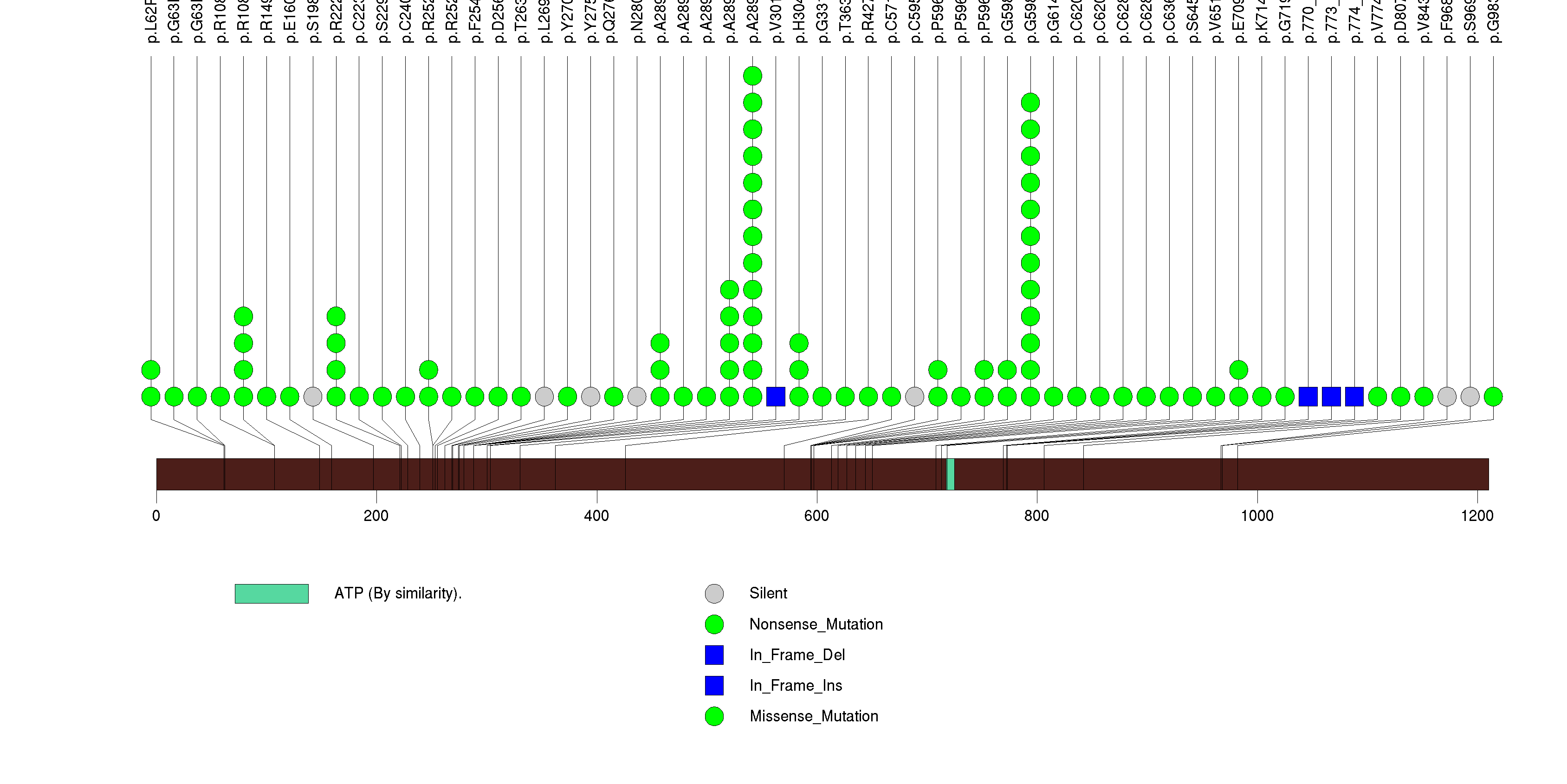
Figure S4. This figure depicts the distribution of mutations and mutation types across the IDH1 significant gene.

Figure S5. This figure depicts the distribution of mutations and mutation types across the BRAF significant gene.
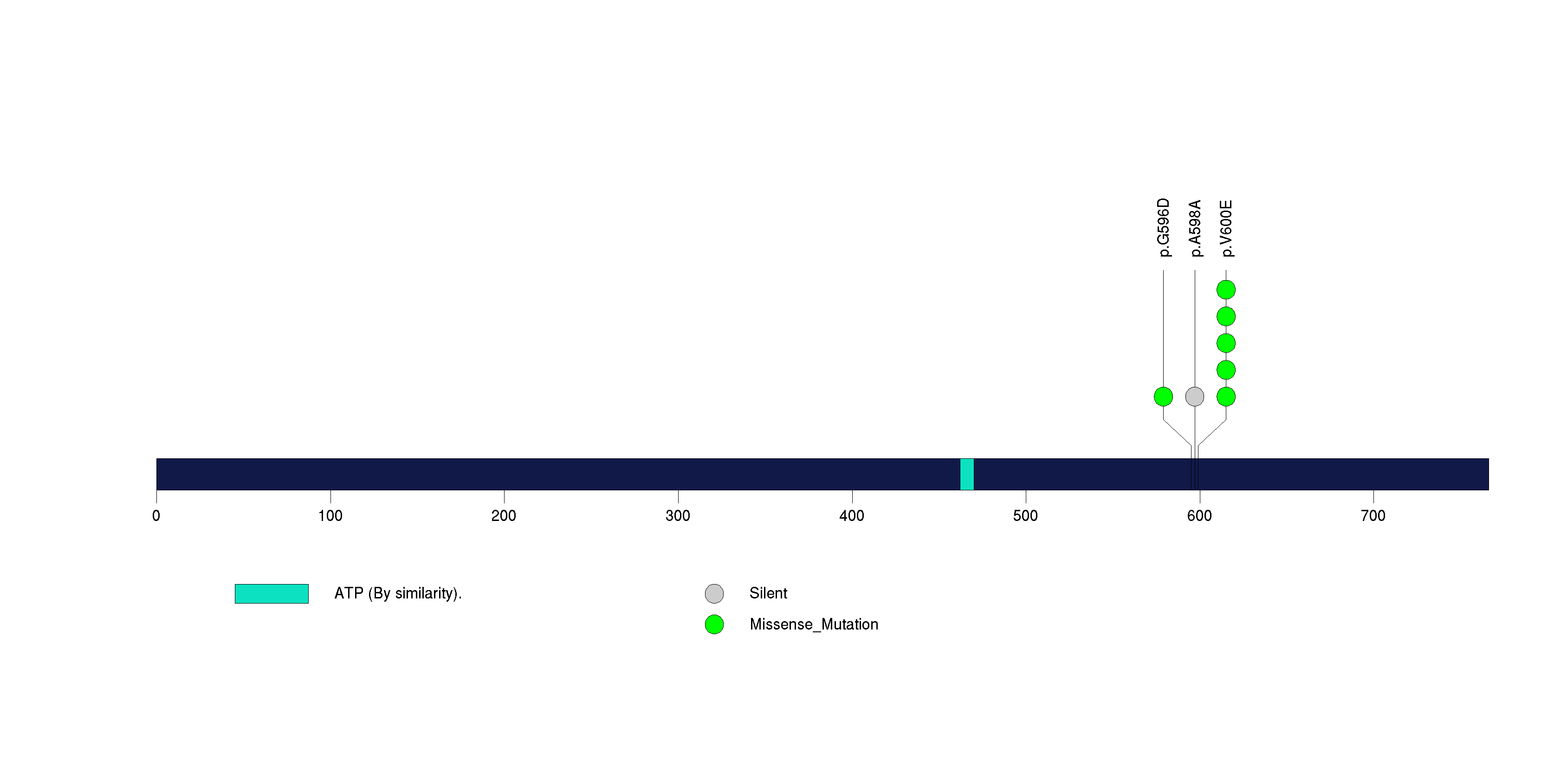
Figure S6. This figure depicts the distribution of mutations and mutation types across the PTEN significant gene.

Figure S7. This figure depicts the distribution of mutations and mutation types across the PIK3CA significant gene.

Figure S8. This figure depicts the distribution of mutations and mutation types across the RB1 significant gene.

Figure S9. This figure depicts the distribution of mutations and mutation types across the NF1 significant gene.
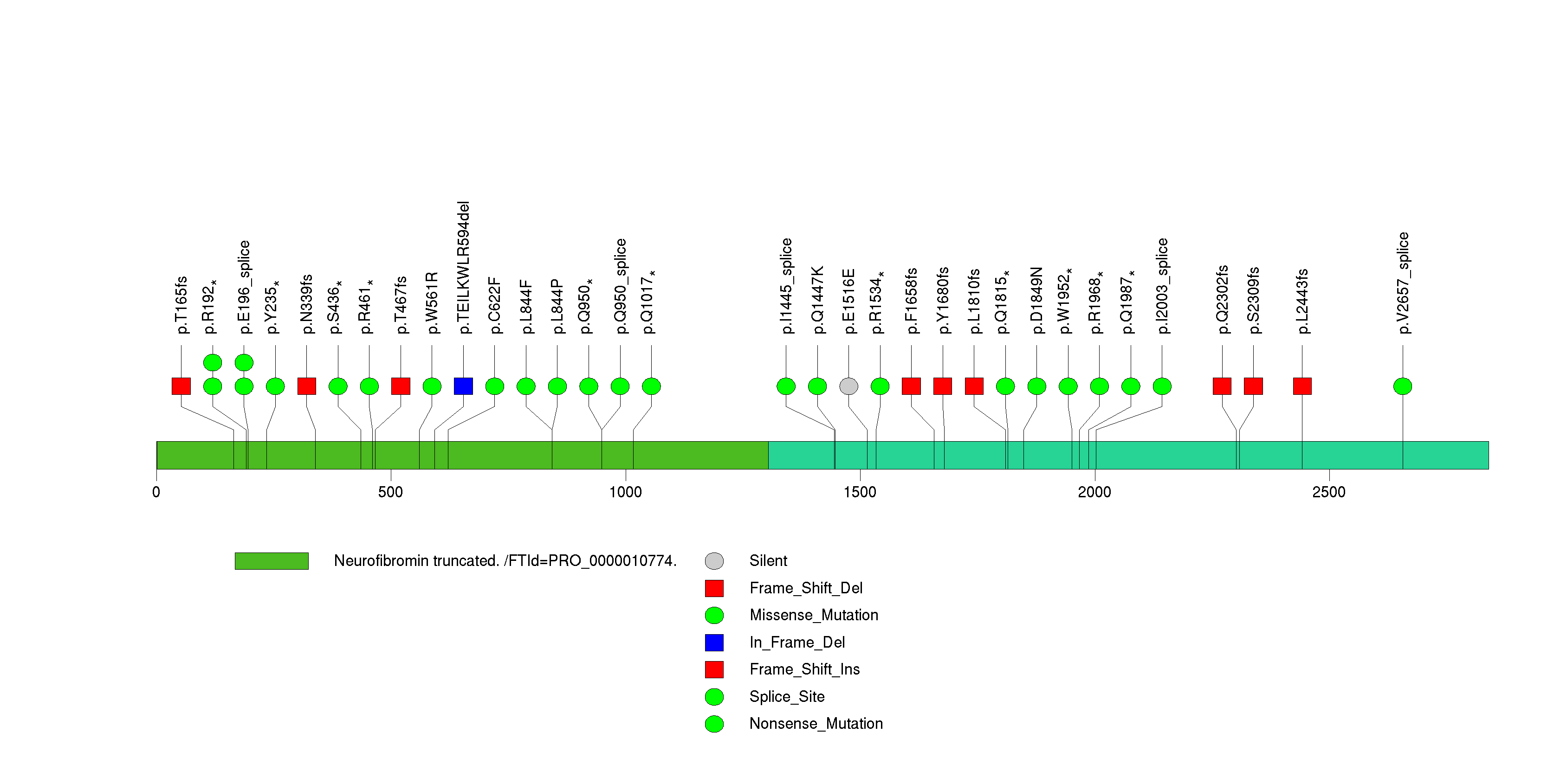
Figure S10. This figure depicts the distribution of mutations and mutation types across the SPTA1 significant gene.

Figure S11. This figure depicts the distribution of mutations and mutation types across the KRTAP4-11 significant gene.
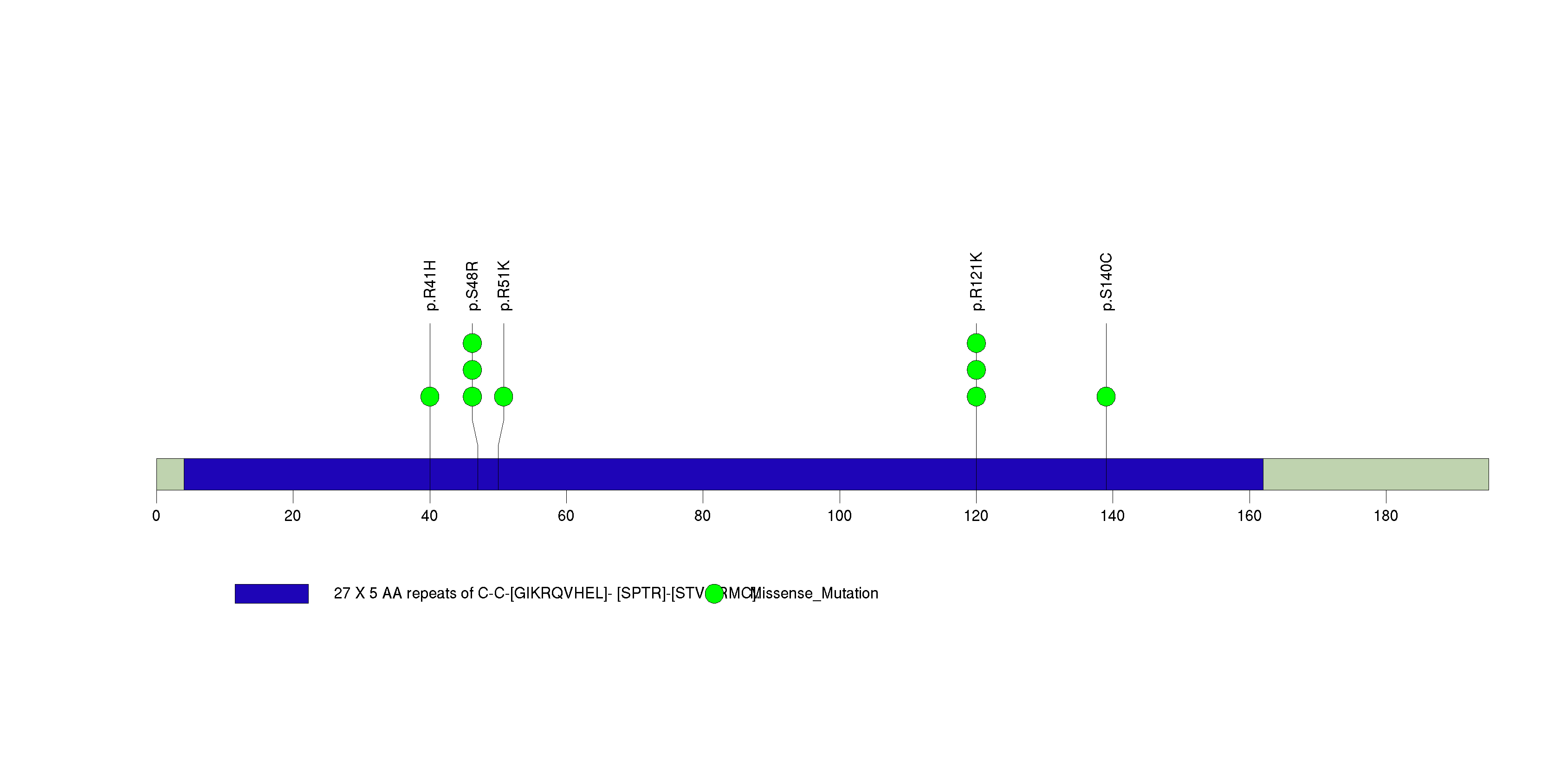
Figure S12. This figure depicts the distribution of mutations and mutation types across the GABRA6 significant gene.

Figure S13. This figure depicts the distribution of mutations and mutation types across the KEL significant gene.
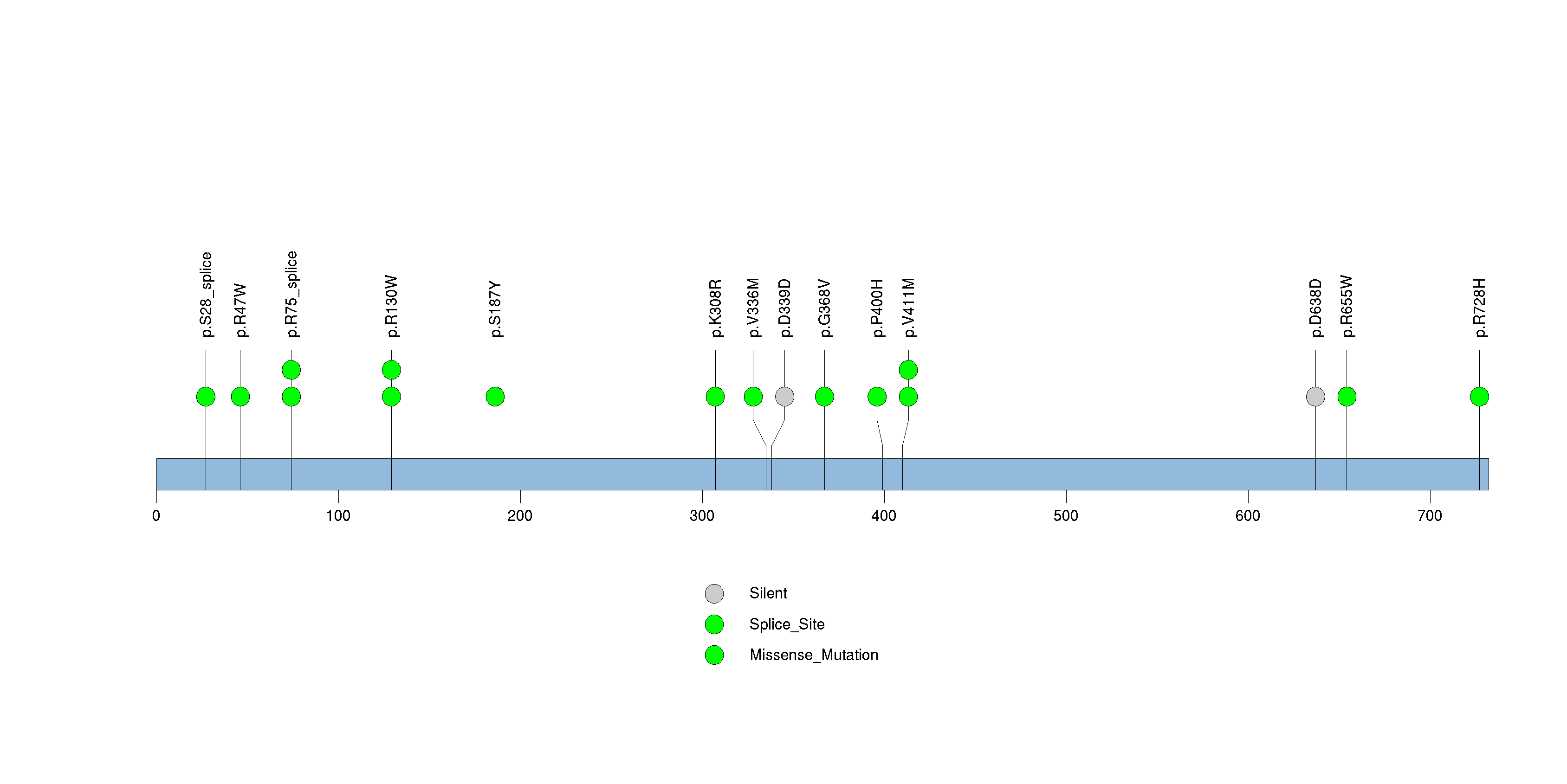
Figure S14. This figure depicts the distribution of mutations and mutation types across the RPL5 significant gene.

Figure S15. This figure depicts the distribution of mutations and mutation types across the CDH18 significant gene.
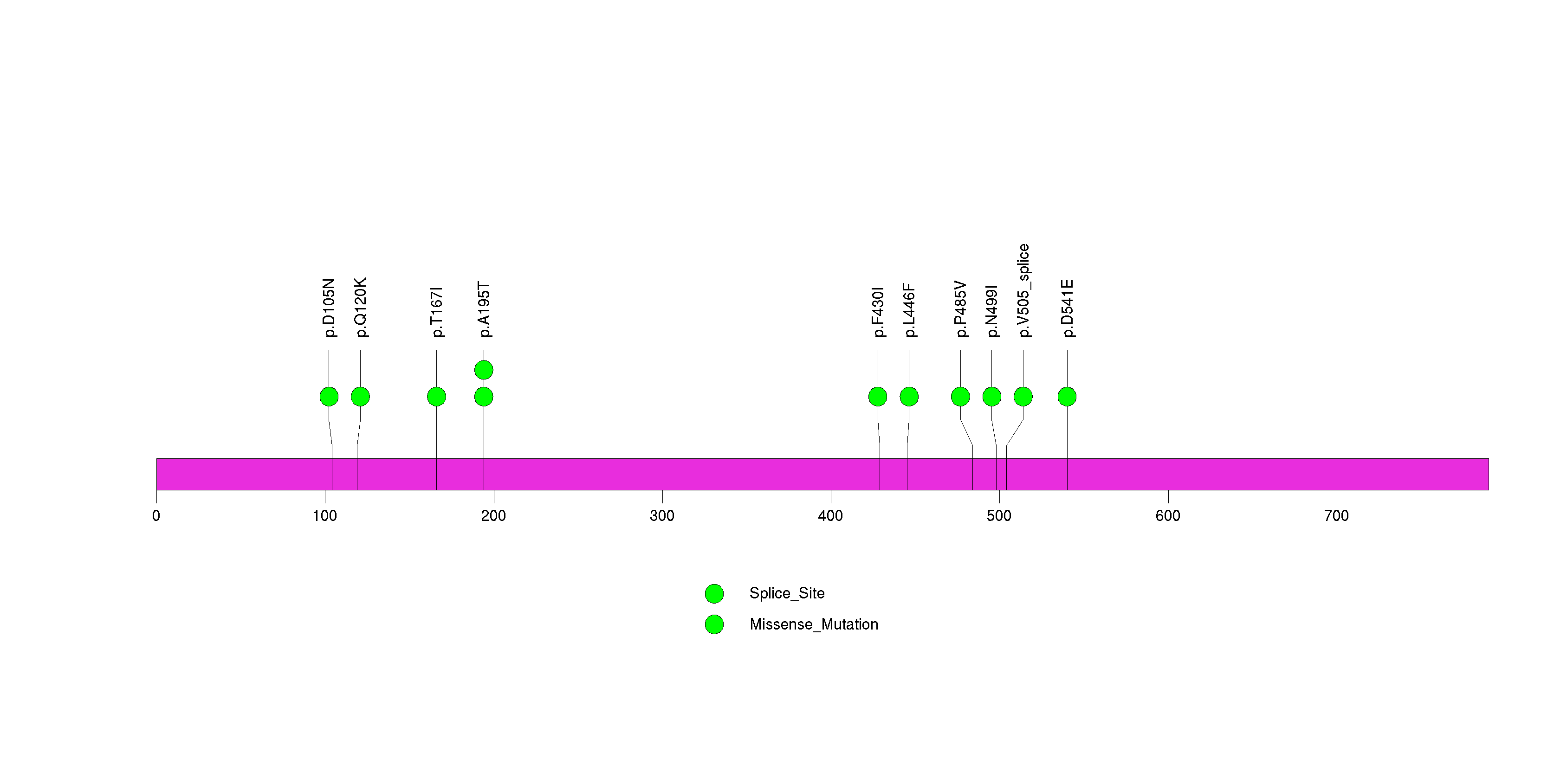
Figure S16. This figure depicts the distribution of mutations and mutation types across the SEMA3C significant gene.

Figure S17. This figure depicts the distribution of mutations and mutation types across the TPTE2 significant gene.
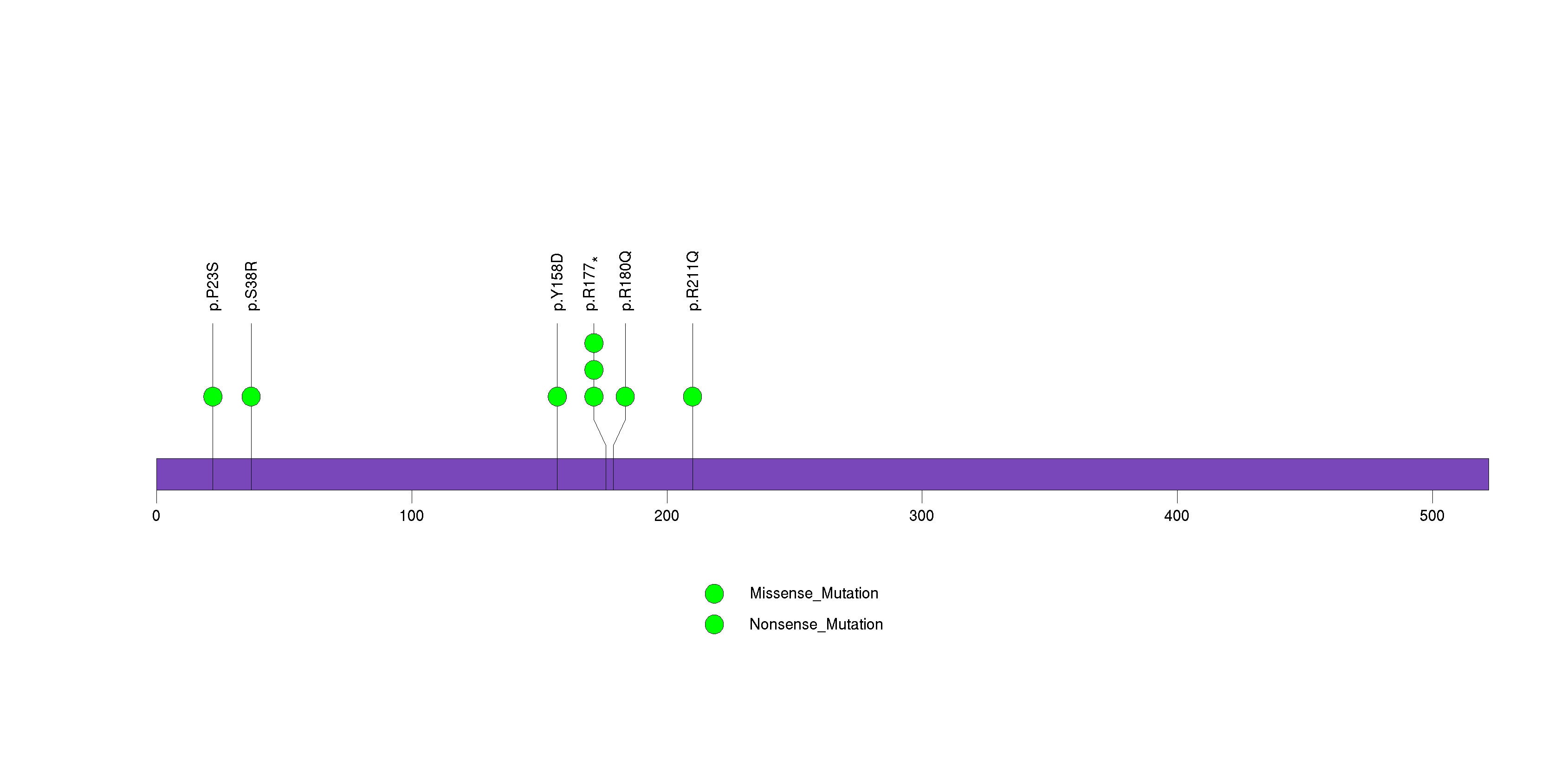
Figure S18. This figure depicts the distribution of mutations and mutation types across the ZNF844 significant gene.

Figure S19. This figure depicts the distribution of mutations and mutation types across the OR8K3 significant gene.

Figure S20. This figure depicts the distribution of mutations and mutation types across the OR5AR1 significant gene.

Figure S21. This figure depicts the distribution of mutations and mutation types across the STAG2 significant gene.
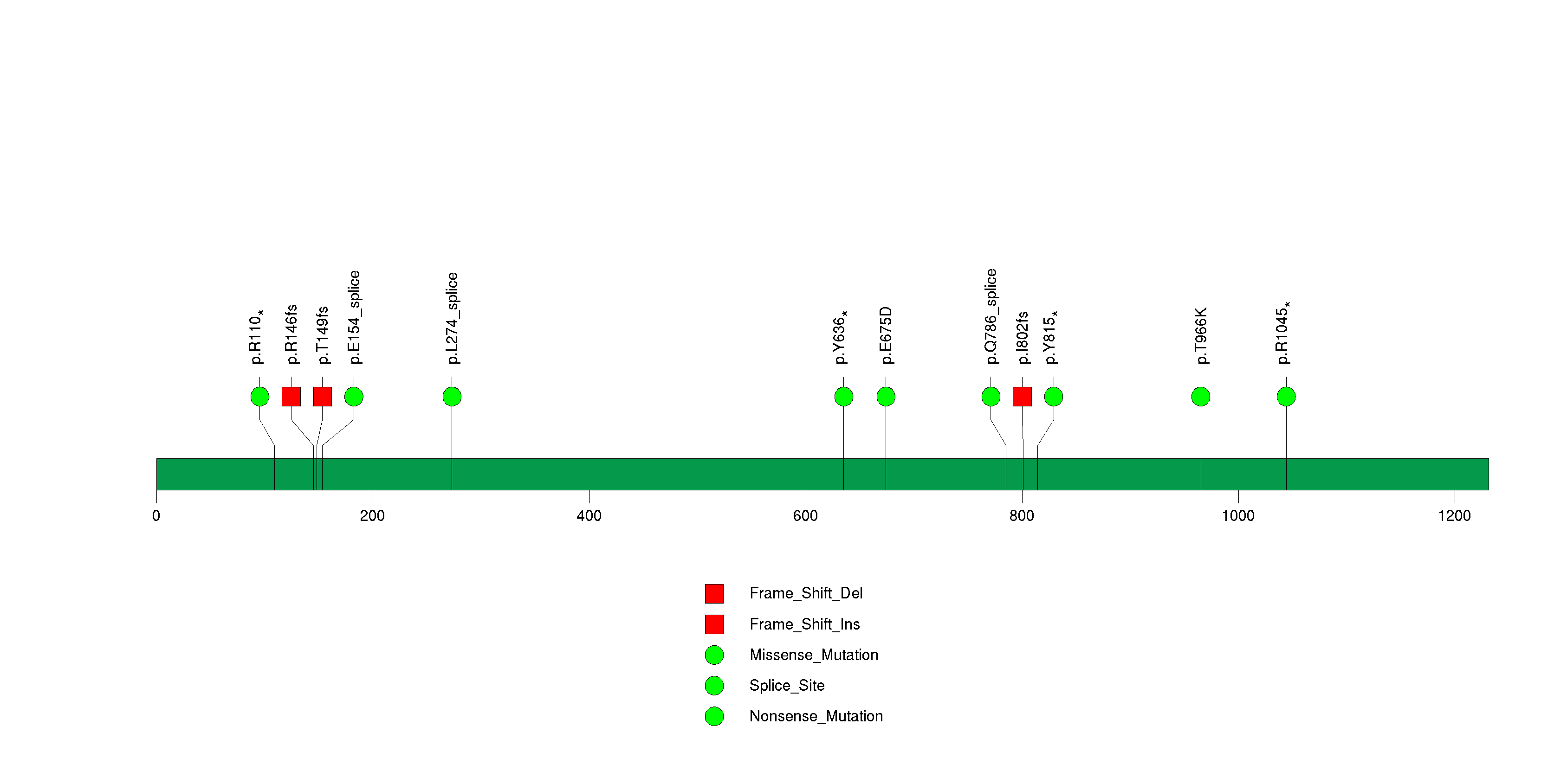
Figure S22. This figure depicts the distribution of mutations and mutation types across the SEMG1 significant gene.
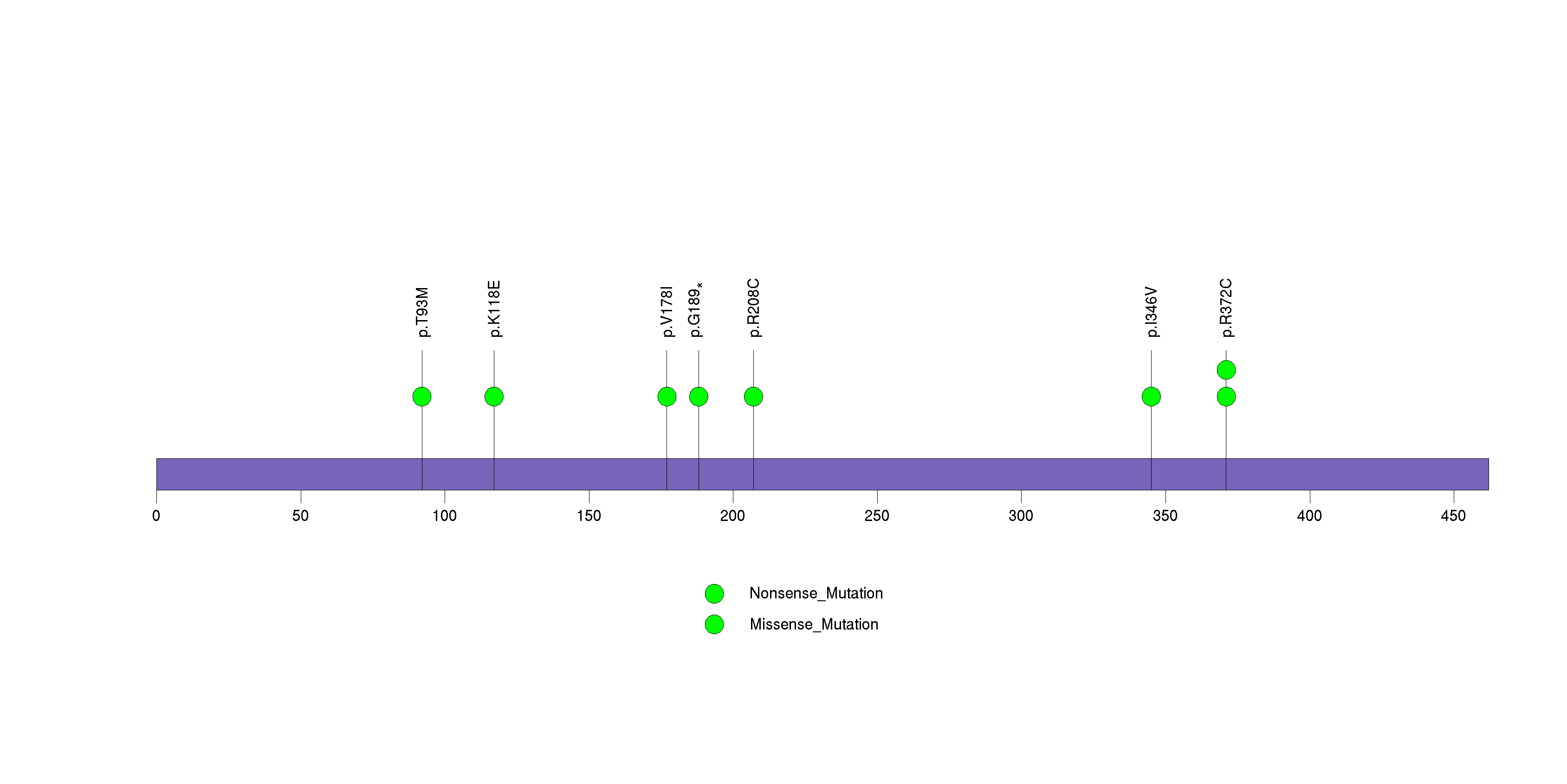
Figure S23. This figure depicts the distribution of mutations and mutation types across the CDC27 significant gene.
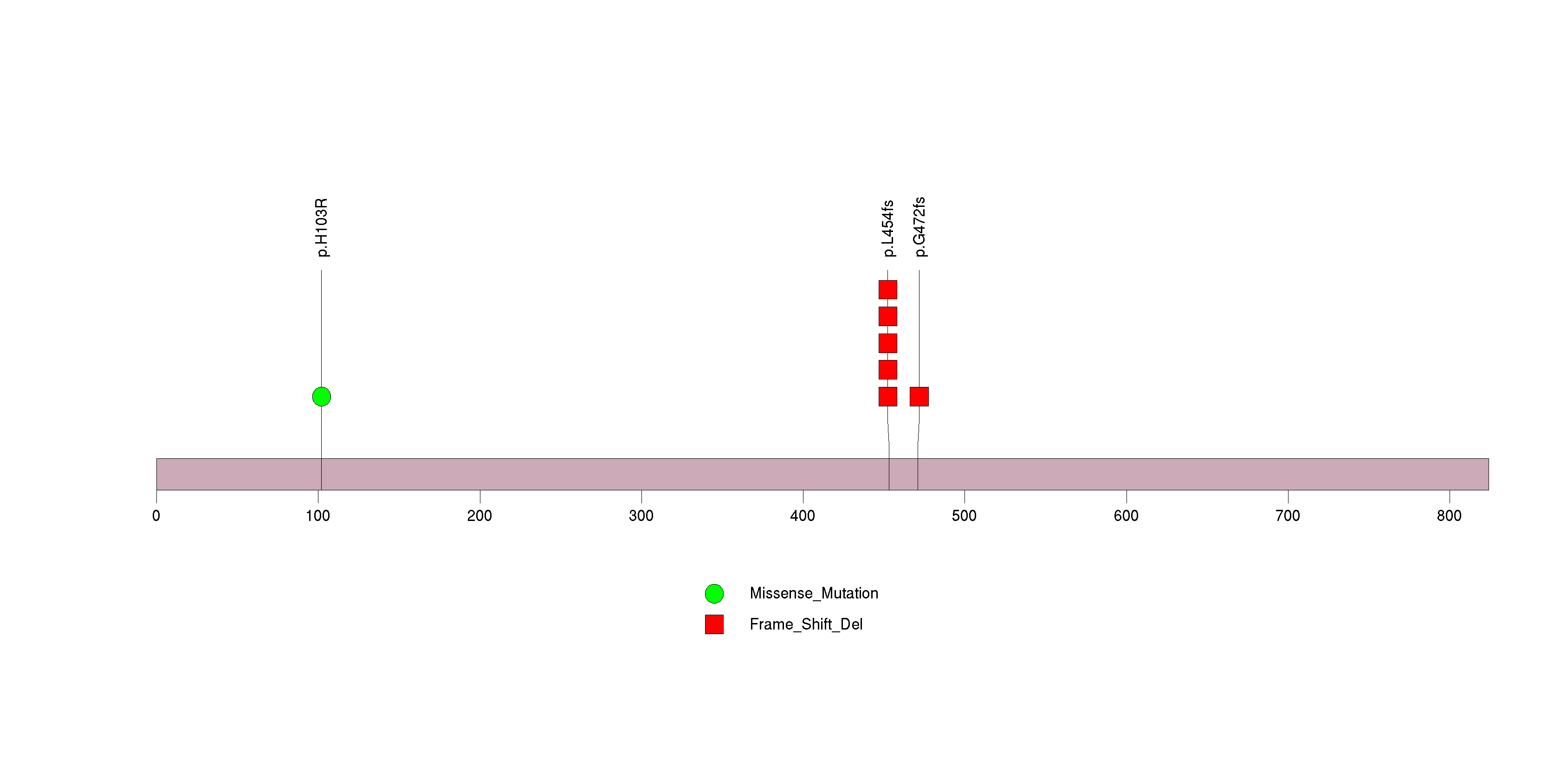
Figure S24. This figure depicts the distribution of mutations and mutation types across the PDGFRA significant gene.
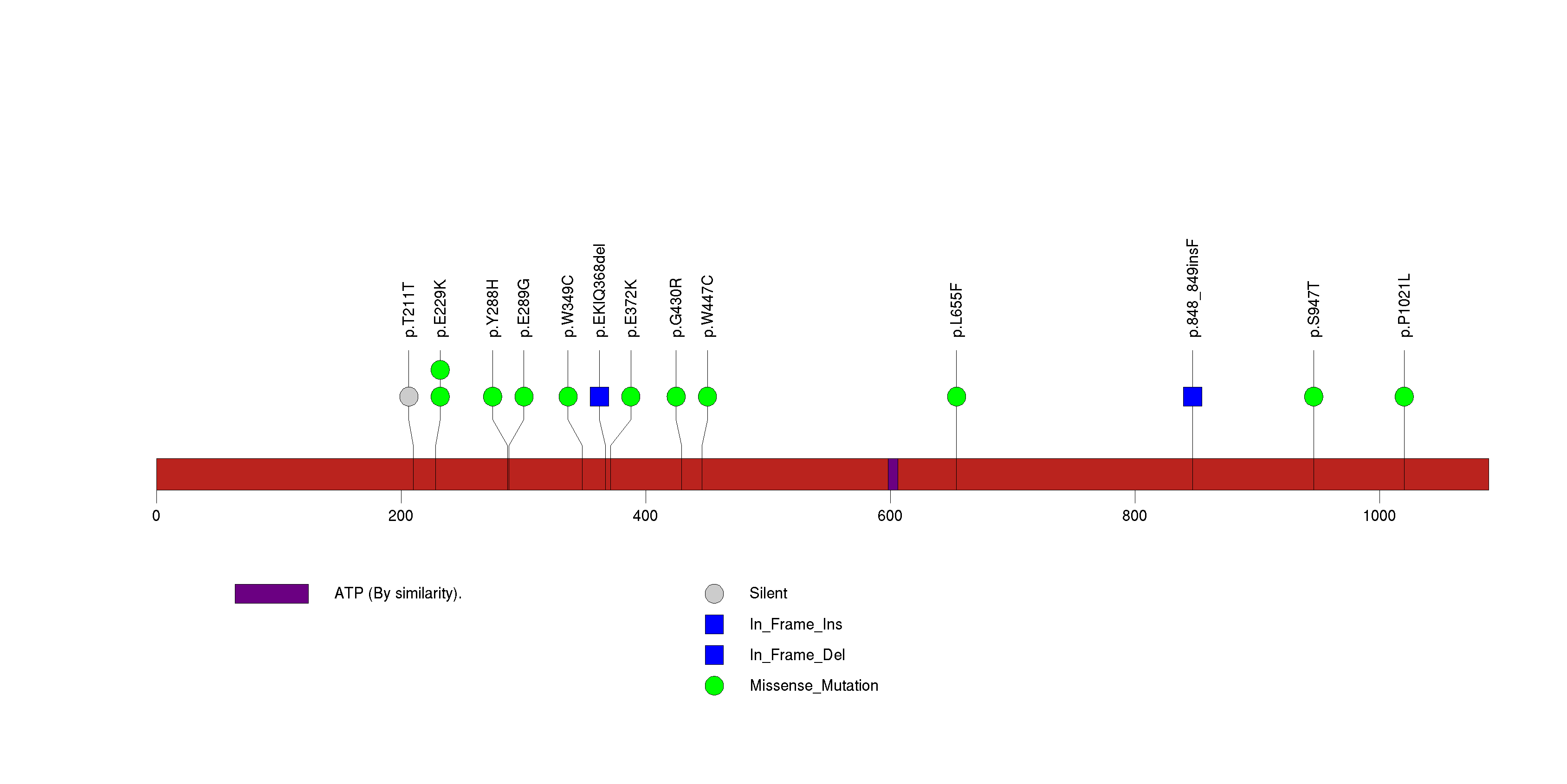
Figure S25. This figure depicts the distribution of mutations and mutation types across the IFNA10 significant gene.

Figure S26. This figure depicts the distribution of mutations and mutation types across the SULT1B1 significant gene.
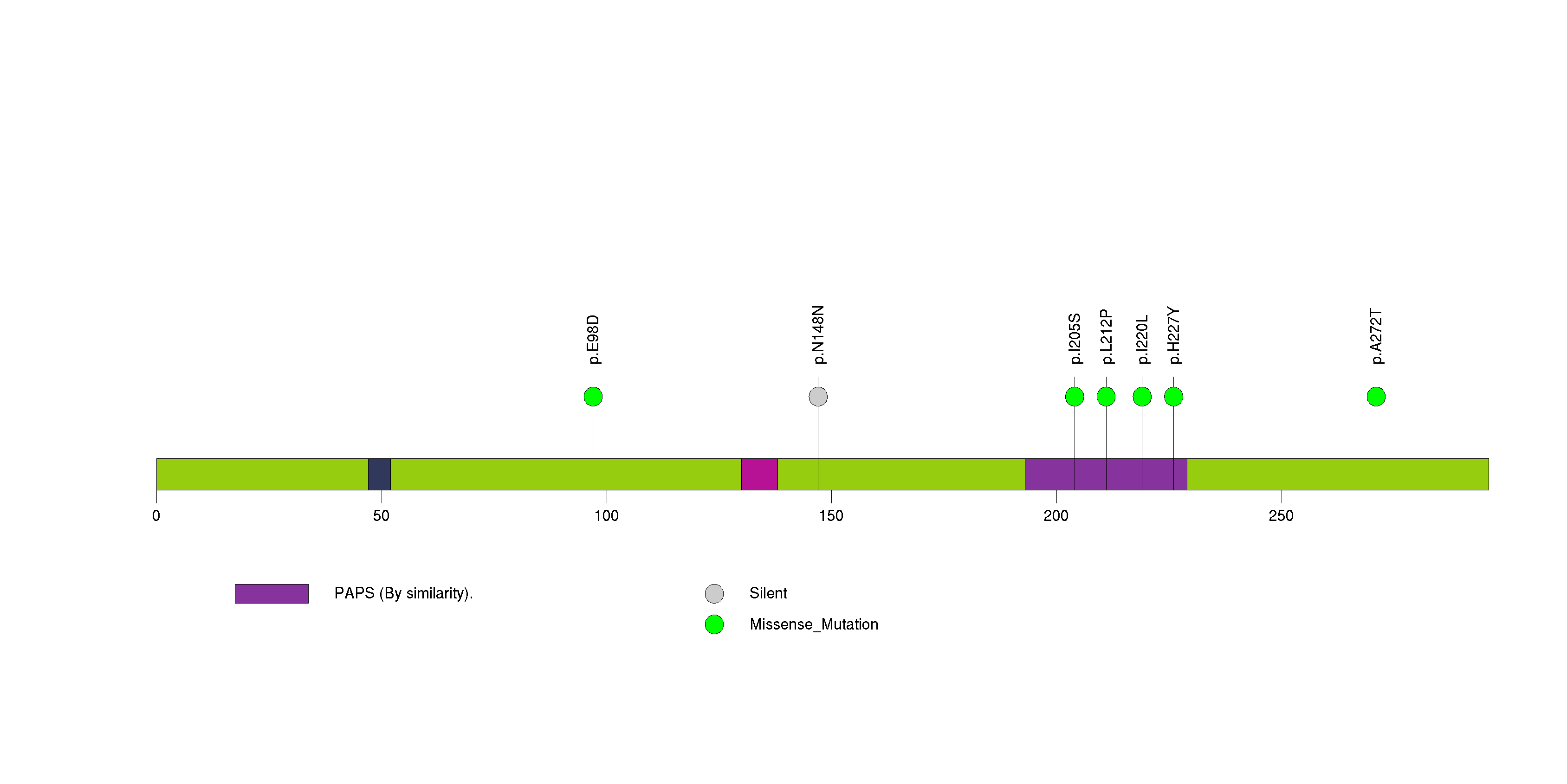
Figure S27. This figure depicts the distribution of mutations and mutation types across the ADAM29 significant gene.
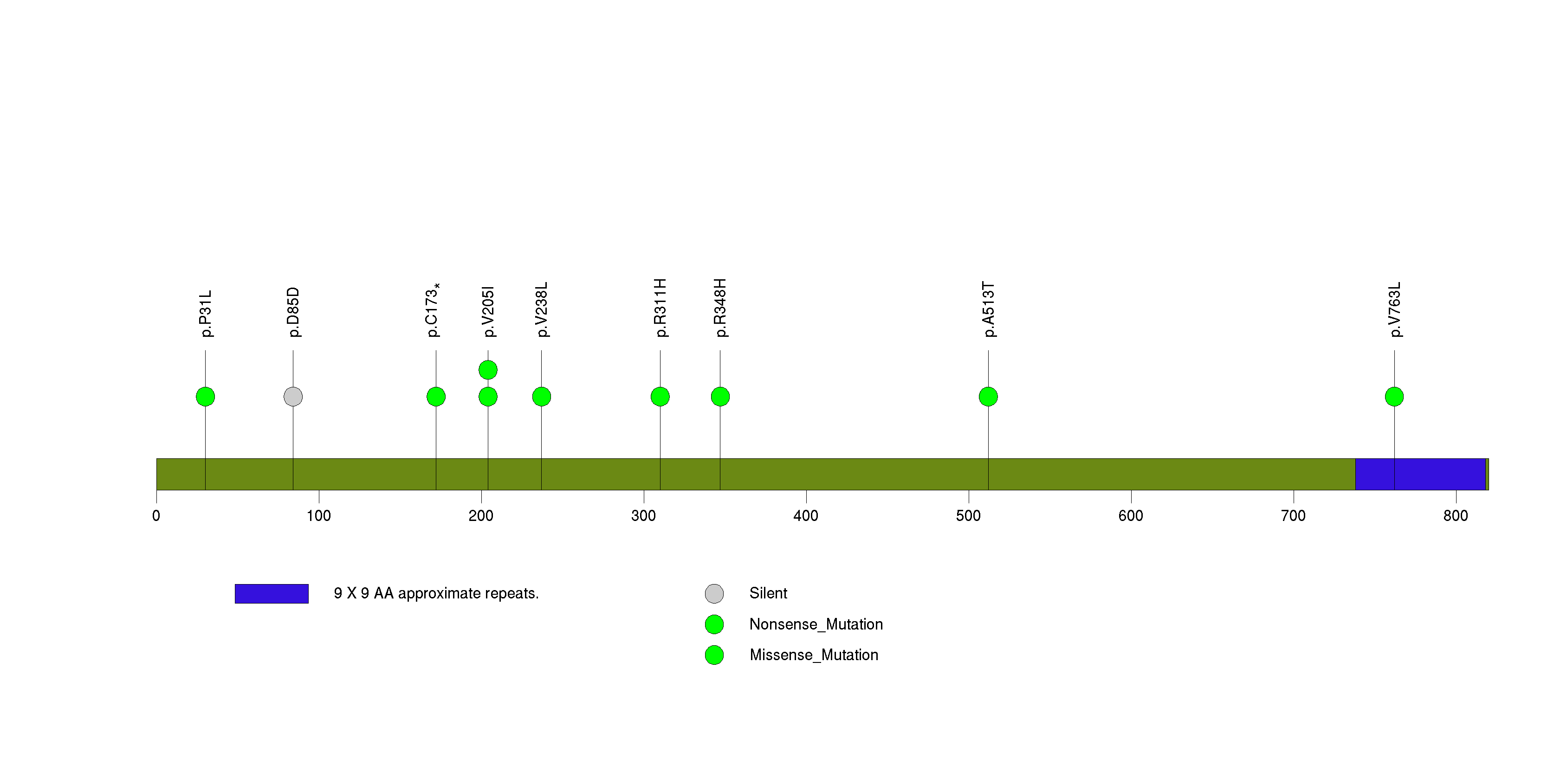
Figure S28. This figure depicts the distribution of mutations and mutation types across the HEATR7B2 significant gene.
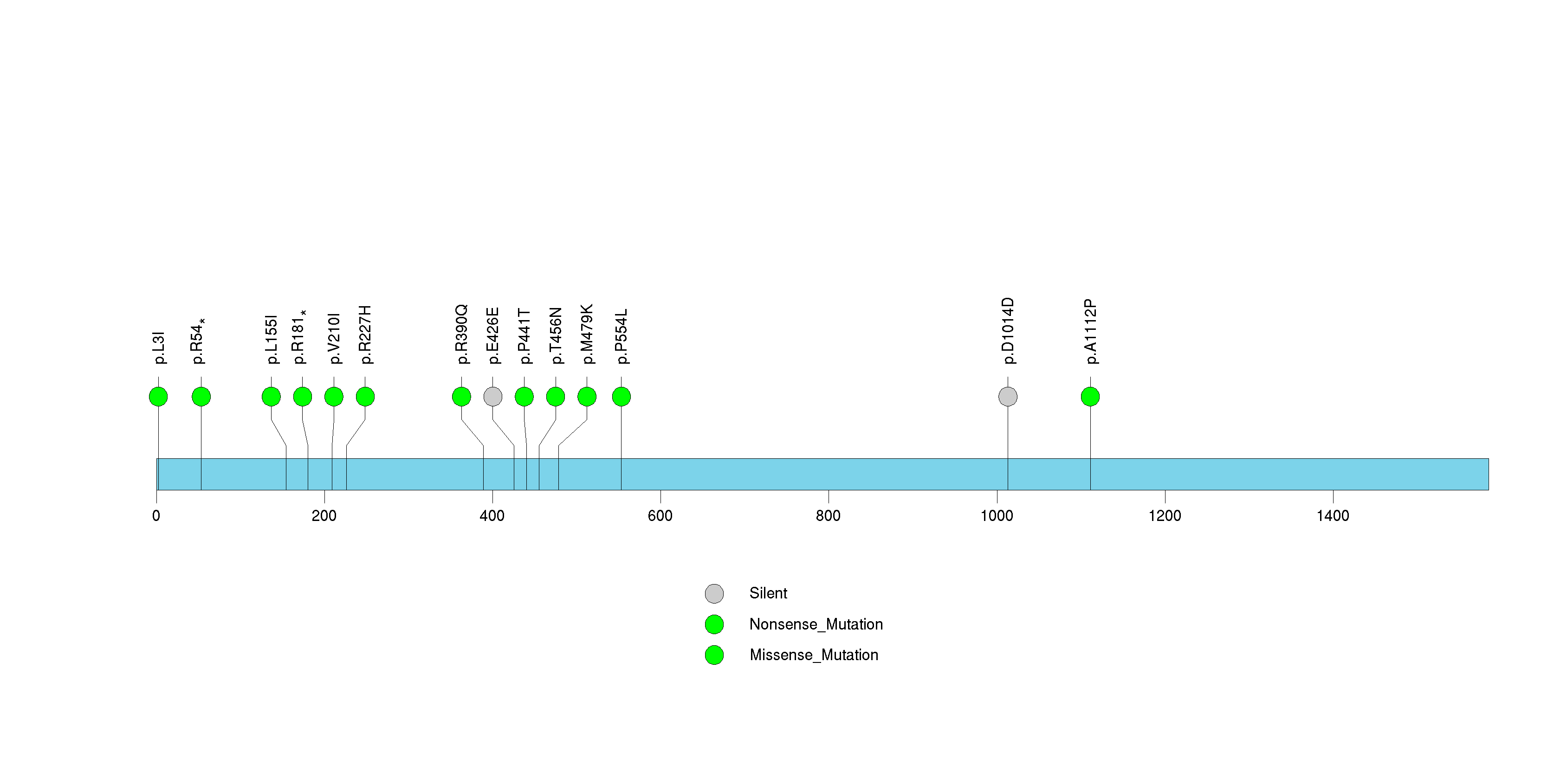
Figure S29. This figure depicts the distribution of mutations and mutation types across the COL1A2 significant gene.
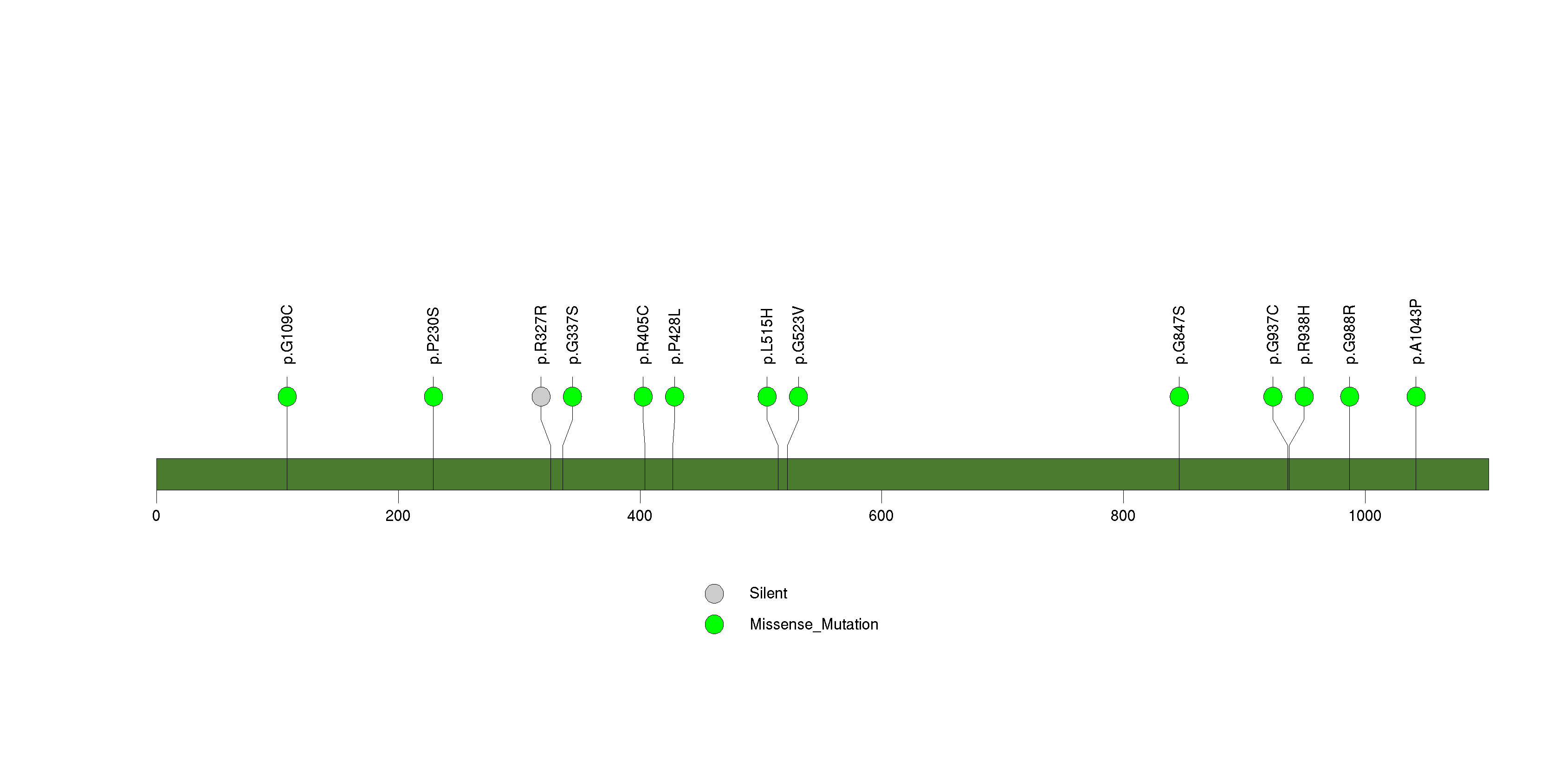
Figure S30. This figure depicts the distribution of mutations and mutation types across the ABCC9 significant gene.
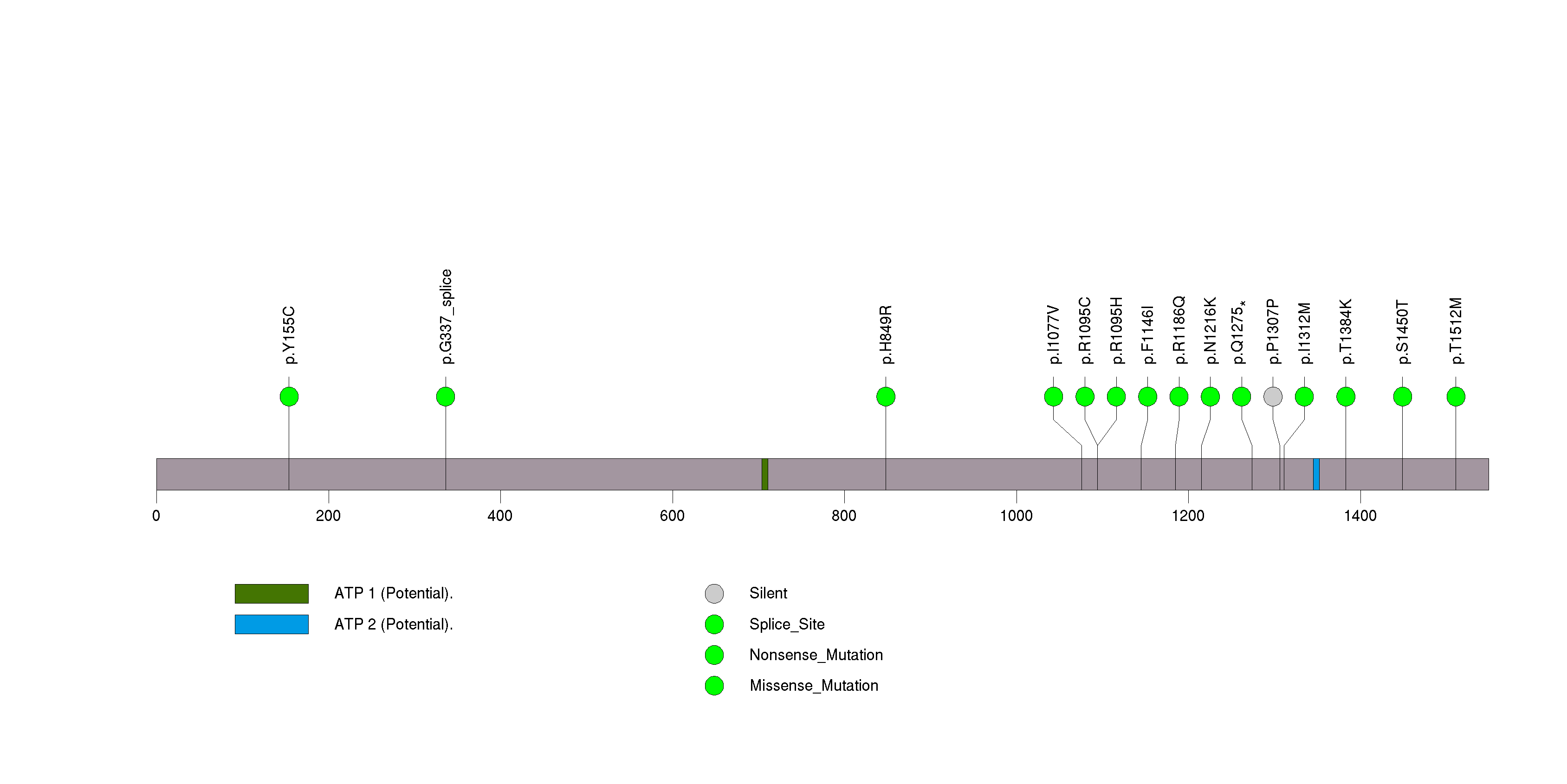
Figure S31. This figure depicts the distribution of mutations and mutation types across the NLRP5 significant gene.
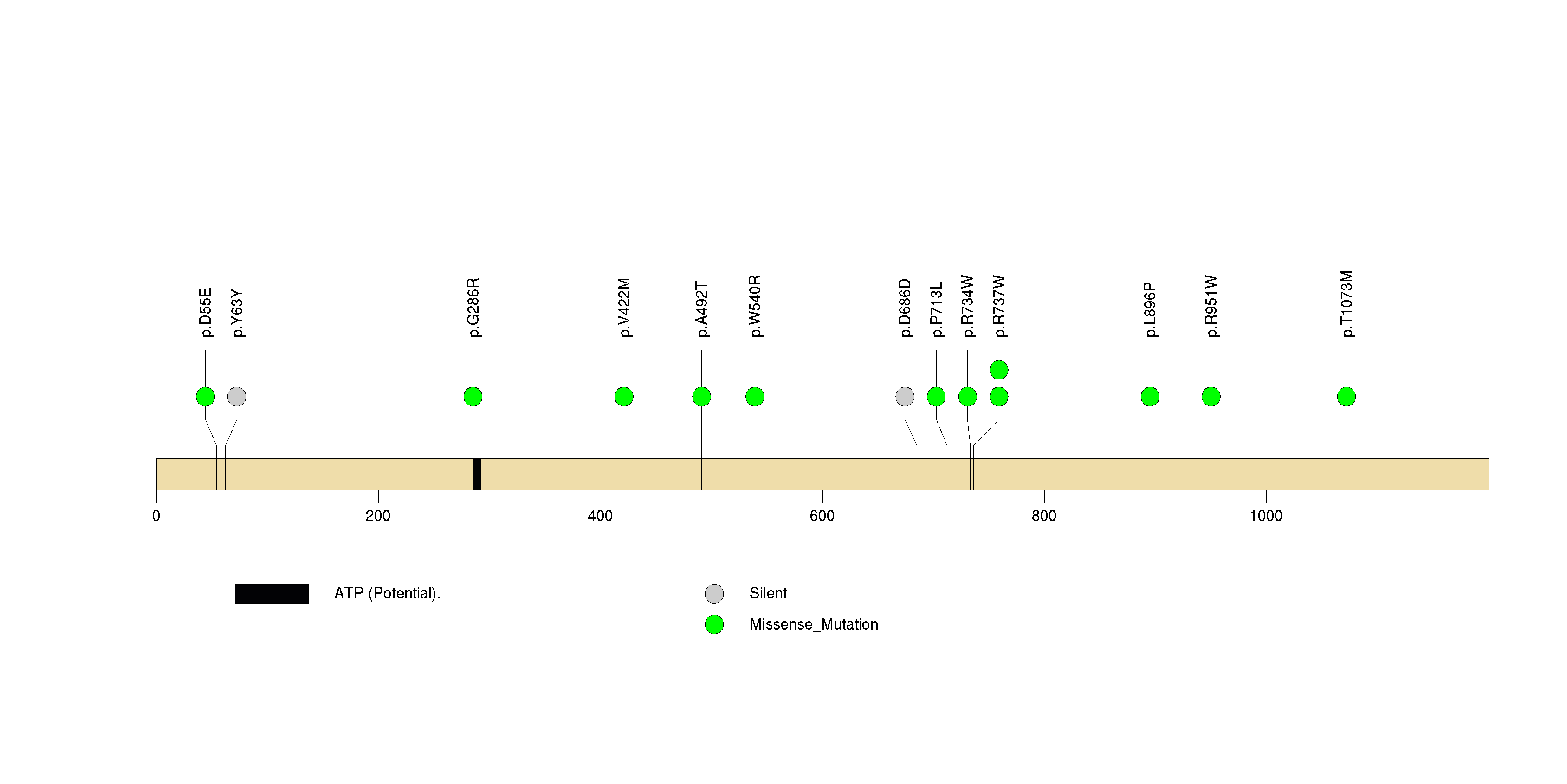
Figure S32. This figure depicts the distribution of mutations and mutation types across the LZTR1 significant gene.
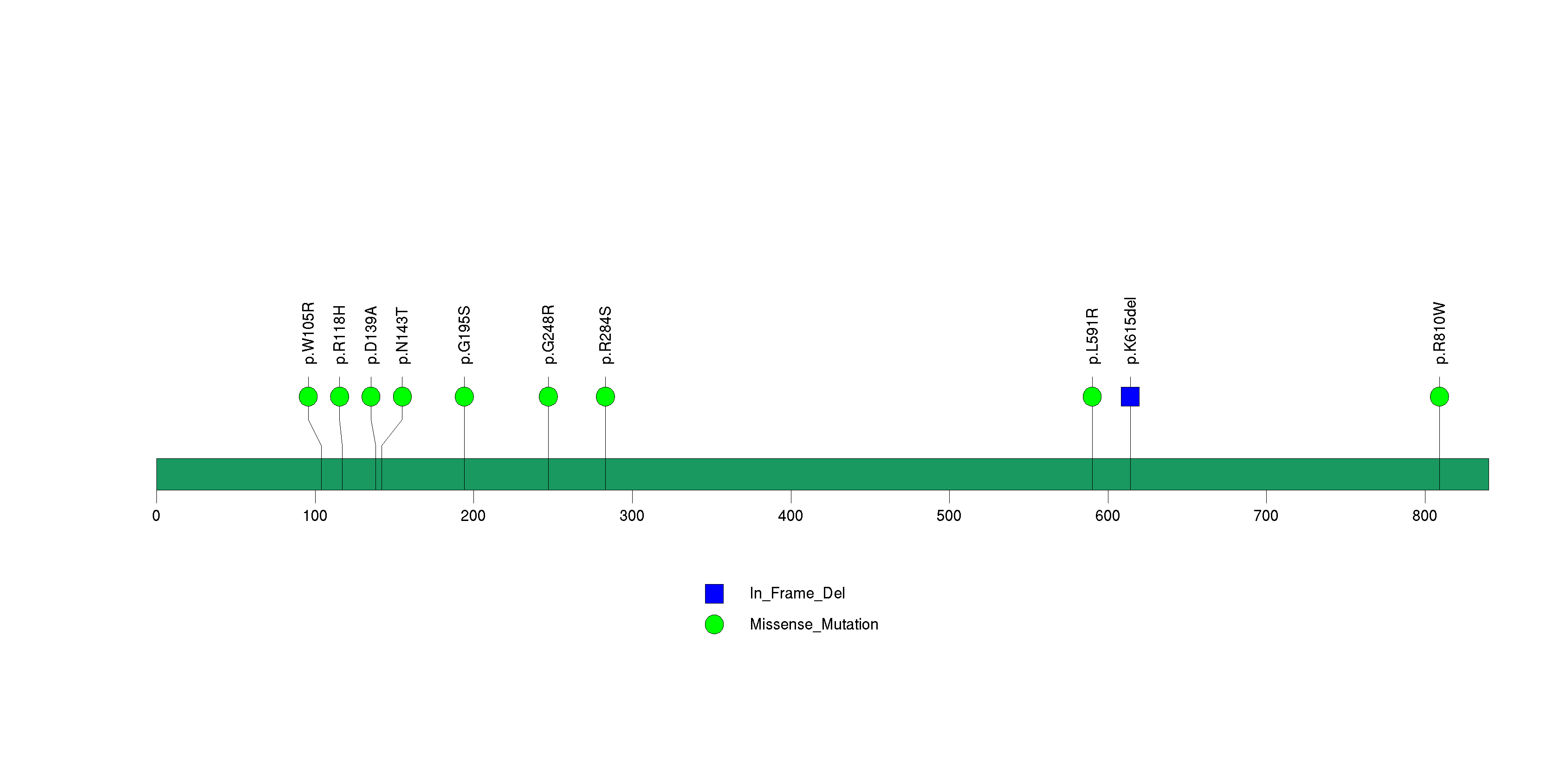
Figure S33. This figure depicts the distribution of mutations and mutation types across the CALCR significant gene.
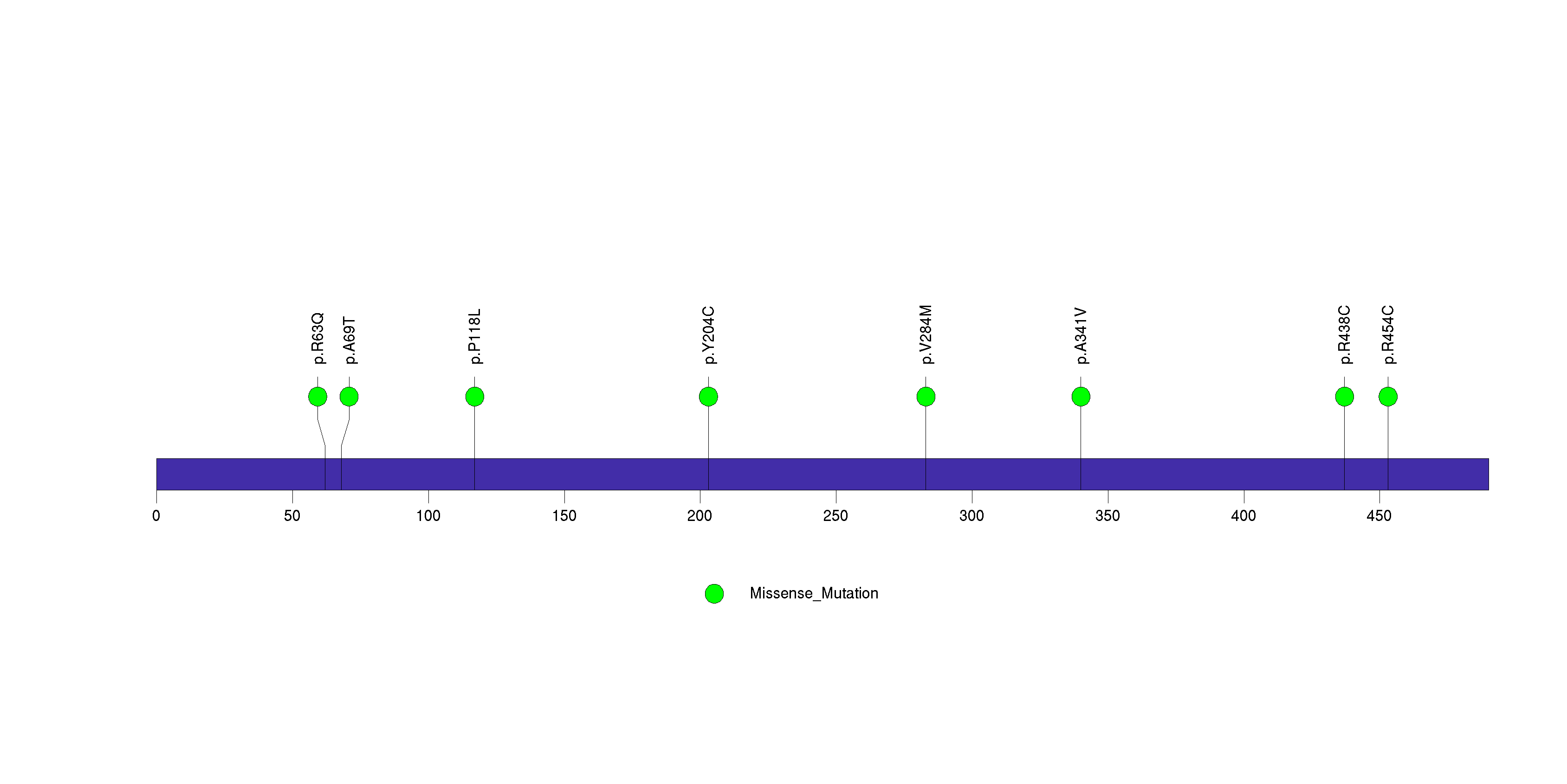
In this analysis, COSMIC is used as a filter to increase power by restricting the territory of each gene. Cosmic version: v48.
Table 4. Get Full Table Significantly mutated genes (COSMIC territory only). To access the database please go to: COSMIC. Number of significant genes found: 80. Number of genes displayed: 10
| rank | gene | description | n | cos | n_cos | N_cos | cos_ev | p | q |
|---|---|---|---|---|---|---|---|---|---|
| 1 | IDH1 | isocitrate dehydrogenase 1 (NADP+), soluble | 15 | 5 | 15 | 1455 | 22380 | 0 | 0 |
| 2 | PIK3R1 | phosphoinositide-3-kinase, regulatory subunit 1 (alpha) | 34 | 33 | 14 | 9603 | 32 | 0 | 0 |
| 3 | TP53 | tumor protein p53 | 100 | 356 | 96 | 103596 | 27718 | 0 | 0 |
| 4 | EGFR | epidermal growth factor receptor (erythroblastic leukemia viral (v-erb-b) oncogene homolog, avian) | 95 | 293 | 72 | 85263 | 1161 | 0 | 0 |
| 5 | PIK3CA | phosphoinositide-3-kinase, catalytic, alpha polypeptide | 35 | 220 | 27 | 64020 | 6345 | 0 | 0 |
| 6 | PTEN | phosphatase and tensin homolog (mutated in multiple advanced cancers 1) | 93 | 767 | 91 | 223197 | 3249 | 0 | 0 |
| 7 | RB1 | retinoblastoma 1 (including osteosarcoma) | 24 | 267 | 15 | 77697 | 41 | 0 | 0 |
| 8 | NF1 | neurofibromin 1 (neurofibromatosis, von Recklinghausen disease, Watson disease) | 34 | 285 | 14 | 82935 | 27 | 0 | 0 |
| 9 | PTPN11 | protein tyrosine phosphatase, non-receptor type 11 (Noonan syndrome 1) | 5 | 32 | 5 | 9312 | 20 | 1.2e-11 | 6.1e-09 |
| 10 | BRAF | v-raf murine sarcoma viral oncogene homolog B1 | 6 | 89 | 6 | 25899 | 71896 | 1.6e-11 | 7.1e-09 |
Note:
n - number of (nonsilent) mutations in this gene across the individual set.
cos = number of unique mutated sites in this gene in COSMIC
n_cos = overlap between n and cos.
N_cos = number of individuals times cos.
cos_ev = total evidence: number of reports in COSMIC for mutations seen in this gene.
p = p-value for seeing the observed amount of overlap in this gene)
q = q-value, False Discovery Rate (Benjamini-Hochberg procedure)
Table 5. Get Full Table Genes with Clustered Mutations
| num | gene | desc | n | mindist | nmuts0 | nmuts3 | nmuts12 | npairs0 | npairs3 | npairs12 |
|---|---|---|---|---|---|---|---|---|---|---|
| 2138 | EGFR | epidermal growth factor receptor (erythroblastic leukemia viral (v-erb-b) oncogene homolog, avian) | 95 | 0 | 317 | 397 | 432 | 317 | 397 | 432 |
| 3198 | IDH1 | isocitrate dehydrogenase 1 (NADP+), soluble | 15 | 0 | 105 | 105 | 105 | 105 | 105 | 105 |
| 7300 | TP53 | tumor protein p53 | 100 | 0 | 102 | 244 | 573 | 102 | 244 | 573 |
| 5744 | PTEN | phosphatase and tensin homolog (mutated in multiple advanced cancers 1) | 93 | 0 | 37 | 98 | 233 | 37 | 98 | 233 |
| 5387 | PIK3CA | phosphoinositide-3-kinase, catalytic, alpha polypeptide | 35 | 0 | 16 | 40 | 54 | 16 | 40 | 54 |
| 5390 | PIK3R1 | phosphoinositide-3-kinase, regulatory subunit 1 (alpha) | 34 | 0 | 11 | 26 | 34 | 11 | 26 | 34 |
| 721 | BRAF | v-raf murine sarcoma viral oncogene homolog B1 | 6 | 0 | 10 | 10 | 15 | 10 | 10 | 15 |
| 3741 | KRTAP4-11 | keratin associated protein 4-11 | 9 | 0 | 6 | 9 | 13 | 6 | 9 | 13 |
| 4475 | NBPF10 | neuroblastoma breakpoint family, member 10 | 11 | 0 | 6 | 6 | 6 | 6 | 6 | 6 |
| 5892 | RB1 | retinoblastoma 1 (including osteosarcoma) | 24 | 0 | 4 | 5 | 11 | 4 | 5 | 11 |
Note:
n - number of mutations in this gene in the individual set.
mindist - distance (in aa) between closest pair of mutations in this gene
npairs3 - how many pairs of mutations are within 3 aa of each other.
npairs12 - how many pairs of mutations are within 12 aa of each other.
Table 6. Get Full Table A Ranked List of Significantly Mutated Genesets. (Source: MSigDB GSEA Cannonical Pathway Set).Number of significant genesets found: 119. Number of genesets displayed: 10
| rank | geneset | description | genes | N_genes | mut_tally | N | n | npat | nsite | nsil | n1 | n2 | n3 | n4 | n5 | n6 | p_ns_s | p | q |
|---|---|---|---|---|---|---|---|---|---|---|---|---|---|---|---|---|---|---|---|
| 1 | METPATHWAY | The hepatocyte growth factor receptor c-Met stimulates proliferation and alters cell motility and adhesion on binding the ligand HGF. | ACTA1, CRK, CRKL, DOCK1, ELK1, FOS, GAB1, GRB2, GRF2, HGF, HRAS, ITGA1, ITGB1, JUN, MAP2K1, MAP2K2, MAP4K1, MAPK1, MAPK3, MAPK8, MET, PAK1, PIK3CA, PIK3R1, PTEN, PTK2, PTK2B, PTPN11, PXN, RAF1, RAP1A, RAP1B, RASA1, SOS1, SRC, STAT3 | 35 | CRKL(1), DOCK1(2), ELK1(2), FOS(1), HGF(1), ITGA1(2), ITGB1(1), MAP2K1(1), MAP4K1(2), MAPK1(2), MAPK3(1), MAPK8(1), MET(3), PAK1(1), PIK3CA(35), PIK3R1(34), PTEN(93), PTK2B(3), PTPN11(5), PXN(1), RAF1(1), SOS1(3), SRC(2), STAT3(1) | 19365179 | 199 | 155 | 168 | 5 | 21 | 39 | 26 | 40 | 73 | 0 | <1.00e-15 | <1.00e-15 | <5.70e-14 |
| 2 | MTORPATHWAY | Mammalian target of rapamycin (mTOR) senses mitogenic factors and nutrients, including ATP, and induces cell proliferation. | AKT1, EIF3S10, EIF4A1, EIF4A2, EIF4B, EIF4E, EIF4EBP1, EIF4G1, EIF4G2, EIF4G3, FKBP1A, FRAP1, MKNK1, PDK2, PDPK1, PIK3CA, PIK3R1, PPP2CA, PTEN, RPS6, RPS6KB1, TSC1, TSC2 | 21 | AKT1(1), EIF4A1(1), EIF4B(1), EIF4G1(1), EIF4G3(1), PIK3CA(35), PIK3R1(34), PTEN(93), TSC2(4) | 12107623 | 171 | 144 | 140 | 2 | 12 | 35 | 22 | 31 | 71 | 0 | <1.00e-15 | <1.00e-15 | <5.70e-14 |
| 3 | PTENPATHWAY | PTEN suppresses AKT-induced cell proliferation and antagonizes the action of PI3K. | AKT1, BCAR1, CDKN1B, FOXO3A, GRB2, ILK, ITGB1, MAPK1, MAPK3, PDK2, PDPK1, PIK3CA, PIK3R1, PTEN, PTK2, SHC1, SOS1, TNFSF6 | 16 | AKT1(1), CDKN1B(1), ITGB1(1), MAPK1(2), MAPK3(1), PIK3CA(35), PIK3R1(34), PTEN(93), SOS1(3) | 8464209 | 171 | 142 | 140 | 0 | 11 | 35 | 25 | 30 | 70 | 0 | <1.00e-15 | <1.00e-15 | <5.70e-14 |
| 4 | HCMVPATHWAY | Cytomegalovirus activates MAP kinase pathways in the host cell, inducing transcription of viral genes. | AKT1, CREB1, MAP2K1, MAP2K2, MAP2K3, MAP2K6, MAP3K1, MAPK1, MAPK14, MAPK3, NFKB1, PIK3CA, PIK3R1, RB1, RELA, SP1 | 16 | AKT1(1), CREB1(1), MAP2K1(1), MAP2K3(3), MAP3K1(6), MAPK1(2), MAPK3(1), NFKB1(1), PIK3CA(35), PIK3R1(34), RB1(24), SP1(1) | 8507902 | 110 | 94 | 93 | 4 | 10 | 18 | 14 | 15 | 53 | 0 | 5.18e-08 | <1.00e-15 | <5.70e-14 |
| 5 | CHEMICALPATHWAY | DNA damage promotes Bid cleavage, which stimulates mitochondrial cytochrome c release and consequent caspase activation, resulting in apoptosis. | ADPRT, AKT1, APAF1, ATM, BAD, BAX, BCL2, BCL2L1, BID, CASP3, CASP6, CASP7, CASP9, CYCS, EIF2S1, PRKCA, PRKCB1, PTK2, PXN, STAT1, TLN1, TP53 | 20 | AKT1(1), ATM(4), BCL2(2), CASP9(1), PRKCA(1), PXN(1), STAT1(2), TP53(100) | 12014139 | 112 | 93 | 73 | 2 | 32 | 16 | 13 | 27 | 24 | 0 | 5.17e-12 | <1.00e-15 | <5.70e-14 |
| 6 | RNAPATHWAY | dsRNA-activated protein kinase phosphorylates elF2a, which generally inhibits translation, and activates NF-kB to provoke inflammation. | CHUK, DNAJC3, EIF2S1, EIF2S2, MAP3K14, NFKB1, NFKBIA, PRKR, RELA, TP53 | 9 | CHUK(1), EIF2S2(1), NFKB1(1), NFKBIA(1), TP53(100) | 4335333 | 104 | 86 | 65 | 2 | 32 | 15 | 12 | 25 | 20 | 0 | 3.24e-11 | <1.00e-15 | <5.70e-14 |
| 7 | CTLA4PATHWAY | T cell activation requires interaction with an antigen-MHC-I complex on an antigen-presenting cell (APC), as well as CD28 interaction with the APC's CD80 or 86. | CD28, CD3D, CD3E, CD3G, CD3Z, CD80, CD86, CTLA4, GRB2, HLA-DRA, HLA-DRB1, ICOS, ICOSL, IL2, ITK, LCK, PIK3CA, PIK3R1, PTPN11, TRA@, TRB@ | 17 | CD28(1), CD3E(2), CD3G(1), CD86(2), HLA-DRA(1), PIK3CA(35), PIK3R1(34), PTPN11(5) | 5564653 | 81 | 72 | 68 | 3 | 9 | 13 | 13 | 18 | 28 | 0 | 7.95e-06 | <1.00e-15 | <5.70e-14 |
| 8 | LONGEVITYPATHWAY | Caloric restriction in animals often increases lifespan, which may occur via decreased IGF receptor expression and consequent expression of stress-resistance proteins. | AKT1, CAT, FOXO3A, GH1, GHR, HRAS, IGF1, IGF1R, PIK3CA, PIK3R1, SHC1, SOD1, SOD2, SOD3 | 13 | AKT1(1), GH1(1), IGF1(2), IGF1R(3), PIK3CA(35), PIK3R1(34) | 5803893 | 76 | 69 | 63 | 3 | 5 | 14 | 13 | 16 | 28 | 0 | 1.25e-05 | <1.00e-15 | <5.70e-14 |
| 9 | SA_G1_AND_S_PHASES | Cdk2, 4, and 6 bind cyclin D in G1, while cdk2/cyclin E promotes the G1/S transition. | ARF1, ARF3, CCND1, CDK2, CDK4, CDKN1A, CDKN1B, CDKN2A, CFL1, E2F1, E2F2, MDM2, NXT1, PRB1, TP53 | 15 | CDKN1A(1), CDKN1B(1), CDKN2A(2), MDM2(2), PRB1(1), TP53(100) | 3638352 | 107 | 87 | 68 | 2 | 32 | 16 | 12 | 25 | 22 | 0 | 1.40e-12 | 1.11e-15 | 5.70e-14 |
| 10 | SIG_INSULIN_RECEPTOR_PATHWAY_IN_CARDIAC_MYOCYTES | Genes related to the insulin receptor pathway | AKT1, AKT2, AKT3, BRD4, CAP1, CBL, CDC42, CDKN2A, F2RL2, FLOT1, FLOT2, FOXO1A, GRB2, GSK3A, GSK3B, IGFBP1, INPPL1, IRS1, IRS2, IRS4, LNPEP, MAPK1, MAPK3, PARD3, PARD6A, PDK1, PIK3CA, PIK3CD, PIK3R1, PPYR1, PSCD3, PTEN, PTPN1, RAF1, RPS6KA1, RPS6KA2, RPS6KA3, RPS6KB1, SERPINB6, SFN, SHC1, SLC2A4, SORBS1, SOS1, SOS2, YWHAB, YWHAE, YWHAG, YWHAH, YWHAQ, YWHAZ | 49 | AKT1(1), BRD4(1), CBL(1), CDKN2A(2), FLOT1(1), GSK3B(1), INPPL1(3), IRS1(4), IRS4(3), LNPEP(2), MAPK1(2), MAPK3(1), PARD3(1), PIK3CA(35), PIK3R1(34), PPYR1(1), PTEN(93), RAF1(1), RPS6KA1(1), RPS6KA2(2), RPS6KA3(1), SFN(1), SORBS1(2), SOS1(3), YWHAE(2), YWHAH(1) | 25933575 | 200 | 159 | 169 | 10 | 15 | 39 | 28 | 38 | 80 | 0 | 1.11e-12 | 1.22e-15 | 5.70e-14 |
Table 7. Get Full Table A Ranked List of Significantly Mutated Genesets (Excluding Significantly Mutated Genes). Number of significant genesets found: 0. Number of genesets displayed: 10
| rank | geneset | description | genes | N_genes | mut_tally | N | n | npat | nsite | nsil | n1 | n2 | n3 | n4 | n5 | n6 | p_ns_s | p | q |
|---|---|---|---|---|---|---|---|---|---|---|---|---|---|---|---|---|---|---|---|
| 1 | HSA00472_D_ARGININE_AND_D_ORNITHINE_METABOLISM | Genes involved in D-arginine and D-ornithine metabolism | DAO | 1 | DAO(4) | 314850 | 4 | 4 | 4 | 0 | 3 | 1 | 0 | 0 | 0 | 0 | 0.22 | 0.0022 | 1 |
| 2 | ACE_INHIBITOR_PATHWAY_PHARMGKB | ACE, AGT, AGTR1, AGTR2, BDKRB2, KNG1, NOS3, REN | 8 | ACE(5), AGT(1), AGTR1(1), AGTR2(1), KNG1(2), NOS3(4), REN(5) | 4406003 | 19 | 19 | 18 | 2 | 11 | 2 | 0 | 2 | 4 | 0 | 0.029 | 0.0077 | 1 | |
| 3 | IL18PATHWAY | Pro-inflammatory IL-18 is activated in macrophages by caspase-1 cleavage and, in conjunction with IL-12, stimulates Th1 cell differentiation. | CASP1, IFNG, IL12A, IL12B, IL18, IL2 | 6 | CASP1(2), IFNG(2), IL12B(2) | 1305817 | 6 | 6 | 6 | 1 | 2 | 1 | 1 | 0 | 2 | 0 | 0.34 | 0.0091 | 1 |
| 4 | IL17PATHWAY | Activated T cells secrete IL-17, which stimulates fibroblasts and other cells to secrete inflammatory and hematopoietic cytokines. | CD2, CD34, CD3D, CD3E, CD3G, CD3Z, CD4, CD58, CD8A, CSF3, IL17, IL3, IL6, IL8, KITLG, TRA@, TRB@ | 13 | CD2(1), CD3E(2), CD3G(1), CD4(1), CD58(1), CD8A(1), IL3(1), IL6(1), KITLG(1) | 2719987 | 10 | 10 | 10 | 1 | 3 | 1 | 1 | 3 | 2 | 0 | 0.15 | 0.0092 | 1 |
| 5 | FXRPATHWAY | The nuclear receptor transcription factors FXR and LXR are activated by cholesterol metabolites and regulate cholesterol homeostasis. | FABP6, LDLR, NR0B2, NR1H3, NR1H4, RXRA | 6 | FABP6(1), LDLR(3), NR0B2(1), NR1H3(1), NR1H4(3), RXRA(3) | 2385306 | 12 | 12 | 12 | 2 | 5 | 2 | 0 | 4 | 1 | 0 | 0.18 | 0.011 | 1 |
| 6 | IFNGPATHWAY | IFN gamma signaling pathway | IFNG, IFNGR1, IFNGR2, JAK1, JAK2, STAT1 | 6 | IFNG(2), IFNGR1(1), IFNGR2(3), JAK1(2), JAK2(2), STAT1(2) | 3570580 | 12 | 12 | 12 | 0 | 0 | 0 | 3 | 6 | 3 | 0 | 0.057 | 0.012 | 1 |
| 7 | NUCLEOTIDE_SUGARS_METABOLISM | GALE, GALT, TGDS, UGDH, UXS1 | 5 | GALE(2), GALT(1), TGDS(1), UGDH(1), UXS1(2) | 1713298 | 7 | 7 | 7 | 0 | 1 | 1 | 1 | 2 | 2 | 0 | 0.14 | 0.016 | 1 | |
| 8 | TCRMOLECULE | T Cell Receptor and CD3 Complex | CD3D, CD3E, CD3G, CD3Z, TRA@, TRB@ | 3 | CD3E(2), CD3G(1) | 497037 | 3 | 3 | 3 | 0 | 0 | 0 | 1 | 1 | 1 | 0 | 0.42 | 0.017 | 1 |
| 9 | TCAPOPTOSISPATHWAY | HIV infection upregulates Fas ligand in macrophages and CD4 in helper T cells, leading to widespread Fas-induced T cell apoptosis. | CCR5, CD28, CD3D, CD3E, CD3G, CD3Z, CD4, TNFRSF6, TNFSF6, TRA@, TRB@ | 6 | CCR5(1), CD28(1), CD3E(2), CD3G(1), CD4(1) | 1402861 | 6 | 6 | 6 | 1 | 3 | 0 | 1 | 1 | 1 | 0 | 0.36 | 0.018 | 1 |
| 10 | EOSINOPHILSPATHWAY | Recruitment of eosinophils in the inflammatory response observed in asthma occurs via the chemoattractant eotaxin binding to the CCR3 receptor. | CCL11, CCL5, CCR3, CSF2, HLA-DRA, HLA-DRB1, IL3, IL5 | 8 | CCR3(1), CSF2(2), HLA-DRA(1), IL3(1) | 1326217 | 5 | 5 | 5 | 0 | 2 | 1 | 1 | 0 | 1 | 0 | 0.2 | 0.036 | 1 |
In brief, we tabulate the number of mutations and the number of covered bases for each gene. The counts are broken down by mutation context category: four context categories that are discovered by MutSig, and one for indel and 'null' mutations, which include indels, nonsense mutations, splice-site mutations, and non-stop (read-through) mutations. For each gene, we calculate the probability of seeing the observed constellation of mutations, i.e. the product P1 x P2 x ... x Pm, or a more extreme one, given the background mutation rates calculated across the dataset. [1]
This is an experimental feature. The full results of the analysis summarized in this report can be downloaded from the TCGA Data Coordination Center.